
Warming climate brings larger storms to the Bay Area
Recent atmospheric rivers mean long-term impacts on local climate
By Kevin Miao and Nicole Pimenta Innecco
Irregular atmospheric rivers caused by climate change have brought stronger storms to the Bay Area since the start of the new year, leading to power outages, flash floods, tidal waves and infrastructural damage, physics teacher Kathleen Shreve said.
Atmospheric rivers are relatively long, narrow regions in the atmosphere – like rivers in the sky – that transport water vapor outside of the tropics. When atmospheric riv ers make landfall, they often release this water vapor in the form of rain or snow. The atmospheric river passing through California has been dubbed “The Pineapple Ex press” and originated in Hawaii, bringing record-breaking amounts of rain to the Bay Area, BBC Weather reported.
These rivers create a feedback loop with bomb cy clones: storms that quickly intensify over a short period of time, according to The Guardian. This means the pres ence of one supercharges the other, and these two types of systems have caused the severe weather changes, Kron4 News meteorologist and specialist in Bay Area weather, Kyla Grogan said.
Following the current trajectory of climate change, Cal ifornia could see more extreme weather in the future, an other Kron4 News meteorologist John Shrable said.
“Scientists are worried that in the long run, if human influence on the environment continues, we could see ma jor changes and water currents in our oceans [and] in cli mates,” Shrable, who specializes in Bay Area weather, said. “[For] a landscape like California, which is already prone to extremes, those changes could be more noticeable; our storms could be stronger, while our droughts longer.”
Climate change has multiple effects on storms, but the most visible are those on atmospheric rivers, Shrable said. With warmer weather, evaporation from oceans increases and the atmosphere can hold more water, drastically in creasing the size of atmospheric rivers.
Effects of the storms on HHS students include incon veniences such as losing internet or having some roads blocked, senior Elisa Floyd said. However, agricultural com munities outside of Silicon Valley experience more drastic impacts because of their dependence on agriculture.
“It’s a very different level of effects than what we’re [used to] facing,” Floyd, a Silicon Valley Youth Climate Ac tion Board member, said. “Where we are living, we have the privilege to not be affected by it that much, but we have to think about how it’s affecting other people around us.”
The quick turnaround of drought to storm climate exac erbates the effects of the heavy rain, Floyd said.

“Droughts make our soil a lot looser in California, which actually makes how we experience storms worse because our ground can’t absorb the water that we’re now getting through rainfall,” Floyd said.
AP environmental science teacher Richard Carmona said these unpredictable changes make preparing for extreme weather conditions a challenge.
“During a drought, you look silly using limited resources to build things like drainage ditches and culverts to prepare for floods,” Carmona said. “Politicians, because of election cycles, are very short term in the way they view problems, and choose what’s good in the short term instead of long term solutions. That means we end up with things like landslide issues on Highway 17, which I have to drive every day to get to work.”
Flooding is not the only concern from the recent storms. Increased water levels are worrying for coastal communities, Shrable said.
“You’ve seen a lot of beach erosion in places like Half Moon Bay,” Shrable said. “Sea level height is getting higher as well, so the Bay Area is going to have to adapt new sea walls, but we are definitely set up better naturally because we are on hills.”
Amid all the issues in the world, caring for the environment is something students need to be deeply involved with, Grogan, who specializes in Bay Area weather, said.
“We don’t want this to be worse in our lifetime. We want to have clean air, water and all those things,” Grogan said. “Being smart about how we take care of the earth is just a really good idea going forward because there’s no downside to taking better care of the earth, and there certainly could be a lot of upside as we move forward.”

Varsity girls soccer wins CCS championship
Team wins trophy for first time in 30 years, reaches NorCal regional semifinals
By Saira Ahmed and Nicole Kim
What started as a successful soccer season became one for the history books. For the first time in 30 years, varsity girls soccer won the Central Coast Section Division 2 tournament last month.
“I’m proud of where we’ve gone as a team because I don’t think any of us knew this was gonna happen,” captain, midfielder Grace McGoran said. “Many of us didn’t [even] know there was a state tournament because the girls have not gone for at least 30 years.”
To qualify for CCS, the team had to be in the top three of their league. They were third behind Los Altos High School, who went to Division 1, and Mountain View High School, who went to Division 2 with HHS, McGoran said.
The first CCS game took place on a rainy day, where they beat Salinas High School 2-0 on Feb. 17.
“After winning the first game, you get motivation to want to win the whole thing,” McGoran said.
They then beat Leland High School 2-0 on Feb. 21. On Feb. 24, they faced Mountain View in the CCS final. MVHS had beaten them twice this season. Head coach Raquel DeJesus said she went in nervous, like everybody else, but gave a pregame talk to help get the nerves out.
“I had a feeling deep down that we could do this and we could win it as long as we played our game,” DeJesus said. “And the girls know what I mean when I say ‘our game.’ I ask them every game, ‘How do we play?’ and then they answer it. I just knew going in we were gonna win.”
The team beat Mountain View 1-0, making them this year’s Division 2 CCS champions.
See Girls soccer CCS, page 14
Arts & Culture
This is a recreation of a bomb cyclone satellite image captured on Feb. 4. The bomb cyclone, which resulted from rapidly-dropping atmospheric pressure, brought strong winds and heavy rainfall to the Bay Area, according to the National Weather Service.




The Epitaph e Page 5 Opinion Redefining STEM gender norms: Women in science and technology need adequate resources Volume 61, Issue 5 PAGE DESIGN BY PARTH DHAULAKHANDI AND MALAR RAGURAMAN Page 10
Inspiring through a phone lens: Content creator hopes to make a positive impact on her followers Page 13
Lifestyles
horrors beyond the wall: ‘Zone of Interest’ unveils the everyday evils of Nazi Germany Page 14 Sports Blowing the final whistle: Six football coaches depart, leaving deep cultural legacy @hhsepitaph The Epitaph The Epitaph The Epitaph @hhsepitaph
The
Varsity girls soccer celebrates their Central Coast Section win. Their actual CCS trophy is in the student center’s trophy case.
Photo by Harshitha Vijayakumar
Illustration by Faith Watters
News in a minute
By Evelyn Wang
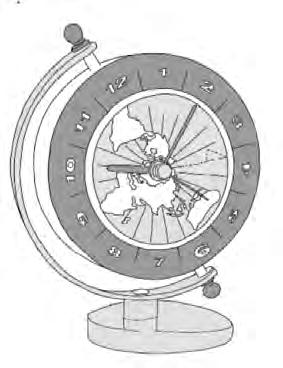
Local: New state law aims to promote pedestrian safety
The “daylighting” law, which was signed by Gov. Gavin Newsom and implemented across California on Jan. 1, prohibits parking within 20 feet of a marked or unmarked crosswalk, according to the San Francisco Chronicle. The regulation aims to improve safety by increasing visibility between moving vehicles and pedestrians as they cross the street — a measure known as daylighting. While enacted at the beginning of the year, the law has a one year grace period, allowing drivers to receive warnings before being fined in
New events added to Battle of the Classes
Leadership class aims to increase inclusivity
By Annie Guo and Veronica Zhao
As the annual Battle of the Classes nears, ASB students are in the midst of organizing activities for the school-wide event, which will take place from March 11-15. Besides traditional BOTC events such as flag football and dance performances, ASB is planning to add new events, including a soccer tournament between staff and students, a boat race between grades and a staff tricycle race, with a goal of encouraging more students to participate in the spirit week, ASB social manager junior Evangeline Park said.
Taking inspiration from MVHS, BOTC will include a boat race between the four classes. Each class will design and race their cardboard boats across the pool, junior class officer Devishi Mishra said.
Aside from implementing new events, Mishra said ASB is also looking to make changes to previous traditions to increase sustainability, including permanently assigned class colors.
“We’re trying to be more sustainable; each year [students] can use the same spirit gear from the previous year,” Mishra said. “People will be more spirited because [they] have [the clothing] already, so I’m excited to see how that’s gonna look.”
Alongside the planning process, a major hurdle ASB has to overcome is the timing of BOTC, which takes place at the same time
as CAASPP testing. The overlap of both events limits the number of brunches available for activities, Park said.
To accommodate CAASPP testing times, ASB will not be hosting any brunch-time activities. Instead, there will be two days of flag football and dance performances, with lunch events on select days, leadership adviser Jessica Kirby said in an email.
Executing new activities and ensuring participant involvement poses further challenges for ASB, predident Grace McGoran said
“[Because] we have a lot of new events, it’s difficult to actually implement the ideas,” McGoran said. “It’s decently easy to continue our long-standing traditions, but the new activities like the soccer game or the pool boat challenge require both approval and participation from the student body and staff.”
Despite the various challenges that come with organizing BOTC, the events serve as a way to engage with a broader audience in the HHS community, Park said.
“Our goal is to include the people who usually don’t participate [in these events],” Park said. “For example, we usually have the same people every year sign up to do activities like Powderpuff. This year, we’re hoping to have activities that can reach a wider audience.”
Similarly, McGoran said the purpose behind BOTC events is to help students feel immersed in the HHS community.
“Throughout this whole year in leadership, we’re trying to promote a spirit of belonging,” McGoran said. “BOTC allows different classes to compete against each other,
2025, according to the San Francisco Chronicle. The mandate does not include funding to add or adjust red paint to guide parking.
National: Alabama Supreme Court rules frozen embryos are ‘extrauterine children’
The Alabama Supreme Court ruled that frozen embryos — embryos created via in vitro fertilization — are considered children; therefore, those who destroy them can be held accountable under the Wrongful Death of a Minor law, according to CBS News. The recent ruling allows three couples, whose frozen embryos were dropped
during an accident and destroyed in a fertility clinic in 2020, to sue for wrongful death after a trial court originally dismissed their claims. The University of Alabama at Birmingham’s division of Reproductive Endocrinology and Infertility has paused IVF treatments due to the ruling to evaluate the the verdict’s affects on physicians and patients. Other fertility organizations may do the same, decreasing IVF access, according to CBS News.
International: Scottish scientists discover 240-million-yearold fossil from China
A team of scientists from National Museums Scotland revealed their discovery of a fivemeter-long aquatic reptile called dinocephalosaurus orientalis, according to ABC News. The fossil, which dates back to the Triassic Period, has an extremely long neck with 32 separate neck vertebrae, giving it a snake-like appearance. While originally found in 2003, recent discoveries of additional specimens allowed researchers to inspect the entire fossil for the first time, providing more insight on the evolution and features of this group of animals, according to ABC News.
School shutdown rumors proven false by district
Rumors prompt preventative initiatives from FUHSD parents
By Amanda Boles and Nathan Gu
Upon seeing trends of declining enrollment resulting in the discontinuation of school programs, some concerned FUHSD parents have falsely concluded that an FUHSD school will be forced to close, principal Greg Giglio said.
This has prompted rumors within the community and has led to preventative initiatives from MVHS and LHS parents, MVHS principal Ben Clausnitzer said in a Zoom interview.
In response to these rumors, district officials hosted a Zoom meeting last month to alleviate concerns from MVHS and LHS parents.
The district has no plans to shut down any school, superintendent Graham Clark said.
Within the past month, there have been petitions to prevent school closures shared in response to these rumors, HHS parent Yan Zeng said, who is part of the FUHSD parent WeChat group where the petitions were shared. These petitions were created based on the assumption that MVHS or LHS would have to close, as they face the most rapid declining enrollment.
Additionally, the large student population in northern Sunnyvale, along with new housing development in the area, left many parents in the group wondering if a new school would be opened there, Zeng added.

As these misunderstandings come up, Clausnitzer said it is important to discuss and clarify them.
“We are investing into our schools for the very long future,” Clausnitzer said.
When looking at enrollment trends for the future of each school, declining enrollment does not warrant such actions, Clark said. The 2% or 3% rate of decrease for FUHSD enrollment across the district hardly affects the size of schools when the average size of a school is 1,900 students, Clark said.
Moreover, Clark said opening a new school would be difficult due to the extensive modernization and remodeling requirements to meet the standards for a new high school.
Clark said it would cost between $400-545 million to open a new high school in FUHSD, which the district has no land or funds for.

Giglio said the shutdown makes no sense financially for all schools, but especially for HHS since it has spent over $100 million in the past 10 years on renovations.
“We just spent $40 million at Lynbrook. Monta Vista has had millions of dollars of construction,” Giglio said. “It would be pretty stupid of us to say, ‘Hey, let’s put bond measure money into that and then close it.’”
“
“What we’ve been trying to do with attendance and enrollment is even it out so our schools are within an acceptable range because then we can still offer similar programs at similar schools,” Giglio said.
Even so, only a drastic decrease in enrollment would result in considering the closing of a school, Giglio said.
[When] people want something, it can happen, but it doesn’t necessarily mean it’s going to. There’s no plan to open a school. There’s no plan to close a school.”
Zeng said displacing a large number of students from closing a school would probably lead to complications. The district would somehow need to accommodate a larger amount of students in a way that meets their educational needs.
Principal Greg Giglio
Though it does not warrant closing a campus, declining enrollment is a continuous issue and Giglio said the district has been changing the programs each school offers.
“If it gets to a point where we have five schools below 5,000 kids [total], you might need to make a decision but right now we’re at 10,000 kids,” Giglio said.
“We’d have to get cut in half. That probably won’t happen in my lifetime.”
Nevertheless, Giglio said the current situation does not point to any drastic actions, making conflict unnecessary.
“[When] people want something, it can happen,” Giglio said, “but it doesn’t necessarily mean it’s going to. There’s no plan to open a school. There’s no plan to close a school.”
March 8, 2024 News The Epitaph 2
PAGE DESIGN BY NATHAN GU AND VERONICA ZHAO
Senior class officer Vishank Vora along with members of the leadership class discuss potential activities for BOTC week.
Remnants of Sunnyvale High School remain at its original location, now The King’s Academy. When the school closed in 1980, this was the last time an FUHSD school was forced to shut down, principal Greg Giglio said.
Photo by Mikha Pilar
Photo
from Homes.com
News Quiz
1) On Feb. 2, the varsity girls soccer team beat which school to secure a CCS Division II championship?
a. Mountain View
b. Aragon
c. Leland
d. St. Francis
2.) How much money would it cost to open a new comprehensive school in the FUHSD area?
a. $300-445 million
b. $400-545 million
c. $500-645 million
d. $600-745 million
3) Which weather phenomenon caused the January Bay Area storms?
a. Watersprout
b. Monsoon
c. Hurricane
d. Atmospheric river

4) What new activity was planned to be added to Battle of the Classes?
a. Soccer tournament
b. Apple bobbing
c. Bean bag race d. Paper airplane competition
5) What is one punishment student liaison Louise Garces will not be issuing to students who misuse the student parking spaces?
a. Tickets
b. Detention
c. Revoked parking permit
d. Suspension a, b, d, a, a Answers:
The Epitaph Electric car spot misuse continues
Disciplinary actions to be enforced if students abuse charging stations
By Faith Watters and Naaga Senthil
When student conduct liaison Louise Garces surveys campus, she said she has noticed students abusing electric vehicle charging spots by parking their gas vehicles in spaces allocated for EV charging. Due to an increase in students abusing these stations, an email was sent to the student body addressing this issue on Feb. 9, principal Greg Giglio said.
“We've had some students who anecdotally would walk by saying, ‘Hey, I was driving around and I could not find a spot because all of the electric spots are taken but eight of the cars aren't charging,'"Giglio said. "It's not our favorite thing to have to go and be the traffic police out there but we will if we have to.”
If students continue to misuse EV charging stations, Garces will begin issuing notices and tickets, Giglio said. Further disciplinary action could include pulling students out of class and asking them to move their car, Giglio added.
“We don't want to [punish students],” Giglio said “We just hope people will be respectful so that, when there is a time when you're in need, hopefully someone is kind enough to not take the space.”
When she notices someone misusing EV charging spaces, Garces said she will explain what the policy for parking in the space is to the driver and tell them to move their car.
“It’s not fair for those people
who need to charge their car… This is the only place that they can do it while they're at work or at school, which does cause a problem,” Garces said.
Spanish teacher Paco Arevalo said that while he does not often use the EV charging spots to charge his car, he has noticed people complaining about a lack of available chargers in both the student and staff parking lots.
Senior Diana Commissariat, who parks in the student lot daily, said students parking gas cars in EV charging stations and parking electric cars while not charging is fairly common. Commissariat said when people are late to class, parking in the EV charging stations helps since it is the closest to the entrance and, sometimes, are the only spots available.
“As someone who drives a Tesla, it’s more convenient for me to park in the EV spot since it is a benefit of having that car" Commissariat said. "If you drive an electric car and you expect that spot to be
open and you are in a time crunch, it becomes a big issue.”
Senior Takena Gautschi Wade, who also parks in the student lot, said she has seen students park gas cars in the EV parking spaces and believes this problem stems from a lack of parking spots in the student lot.
This issue has not affected students enough to enforce disciplinary action, but if students with gas cars continue to park in EV charging spots, then it will become more of a problem to administration, Commissariat said.
To combat this issue, Garces said she wants to put signs saying this space is for charging vehicles and offenders who park there will face detentions and suspensions.
“There's several reasons why students do park in those spots,” Garces said. “One is because it is closer and more convenient, two, they might not find a parking space anywhere else and three, they're not thinking about others, they're thinking about themselves.”

If students receive more than

PAGE DESIGN BY KEVIN MIAO
News 3
two warning notices, they will get referred to the dean, student liaison Louise Garces said.
Photo by Faith Watters
Photo from KTVU
March 8, 2024
Storms in the Bay Area damaged infrastructure such as piers and roadways, according to KTVU.
Editors-in-Chief
Nicole Kim
Rajiv Venkatesh
Managing Editor
Saira Ahmed
News Editors
Brian Ling
Evelyn Wang
Opinion Editors
Anushruti Nagarajan
Lindsey Steel
Lifestyles Editors
Ella Chan
Zeinab Rakhshandehroo
Arts & Culture Editors
Parth Dhaulakhandi
Veronica Zhao
Sports Editors
Nathan Gu
Helen Tam
Senior Design Editor
Mackie Vu
Junior Design Editor
Maya Dutt
Senior Multimedia Editor
Veronica Zhao
Junior Multimedia Editor
Catherine Yang
Senior Social Media Editor
Annabelle Yip
Junior Social Media Editors
Amanda Boles
Elena Shim
Art Editor
Faith Watters
Reporters
Sanah Arya
Andrew Fekete
Danielle Feldsher
Annie Guo
Parker Lin
Alicia Liste
Aviv Matas
Kevin Miao
Adam Orrin
Mikha Pilar
Nicole Pimenta Innecco
Malar Raguraman
Naaga Senthil Anand
Harshi Vijayakumar
Jonathan Xue
Adviser
Natalie Owsley
Thank
Lois
Staff Editorial
HHS must dismantle barriers for LGBTQ+ students
At a school as diverse as ours, inclusivity is paramount. While HHS has made commendable efforts to represent all people and voices, LGBTQ+ community members continue to face barriers. To ensure that all identities are respected, students and staff must work together in fostering an environment where all students are understood, accepted and celebrated.
The need for more inclusivity at our school was exemplified by an incident on Valentine’s Day, where the leadership class hung paper hearts around the quad with every student’s name written on it. However, by using students’ legal names, some inadvertently included the deadnames of transgender students, pride club president Robin Ruan said.
Despite being a thoughtful idea, the event was incredibly painful and humiliating to transgender students, Ruan said. LGBTQ+
students deserve to participate in activities on campus without compromising their well-being. Especially for a celebration that was meant to make everyone feel appreciated, it is disheart-

It is crucial all students are included, whether it’s through our language or our actions.
Empowering
Local races play a critical role in shaping our lives
By Lindsey Steel
In an increasingly polarized nation, the state of our democracy has never been more precarious. But as all eyes seem to be focused on overwhelmingly unpopular presidential candidates, voters are overlooking the local elections that truly matter.
The California primary elections were held on March 5, where voters nominated one presidential candidate from each party to run against each other in the general election on Nov. 5. However, the results of the presidential primaries were essentially already decided before the primary even took place, with experts anticipating a Trump and Biden rematch in the general election, according to AP News.
With the presidential elec-
ening that the comfort of these students was not considered. Prior to Valentine’s Day, Pride Club also wanted to give a schoolwide announcement to recognize the aromantic spectrum, according to an email sent by Pride Club officers. But after submitting the announcement to the office, Ruan said it was shortened dramatically for the sake of time. While Pride Club was ultimately able to deliver a shorter but similar version of their initial announcement, they should have initially had the opportunity to shorten the message themselves to prevent the impact from being lessened.
ASB and administration have a responsibility to serve the student body, and these responsibilities were not met with their actions. Therefore, it is imperative that they, along with teachers, office staff and the student body as a whole, implement changes to prevent similar harmful incidents in the future.
One effective measure is to use yearbook’s list of preferred names, which prevents transgender students from being deadnamed. One instance of where this list could benefit students is when substitute teachers use attendance sheets that do not have preferred names on them, which can be harmful for transgender or nonbinary students, Ruan said.
Additionally, community members can use inclusive language instead of gendered terms like “ladies and gentlemen.” In incorporating neutral phrases such as “folks” or “everyone” instead nonbinary people can feel included in these messages.
Ultimately, fostering an inclusive environment requires proactive measures taken by teachers, administrators and students. By educating ourselves, implementing systems to honor preferred names and adopting inclusive language, we can create a space where everyone feels valued and respected.
communities, one vote at a time
tion dominating so much of the media’s attention, local elections are overlooked. However, these elections, including congressional and Senate races, are often more competitive and hold just as much impact.
66% of voters turned out for the 2020 presidential election, according to the Pew Research Center.
In contrast, local elections have historically received lower voter turnout rates, with just 52.2% of eligible voters participating in midterm elections in 2022, according to NPR.
One of these pivotal local elections includes the crowded primary race to fill the late Sen. Dianne Feinstein’s seat. Given that Senators have a six-year term,
it is critical that Californians vote for candidates who are committed to enacting change during their time in office. Especially without an incumbent senator running for office, the Senate election provides an opportunity for people to elect someone who better represents Californians today, and it is imperative that voters make their voices heard.
Rather than solely focusing on national policy,
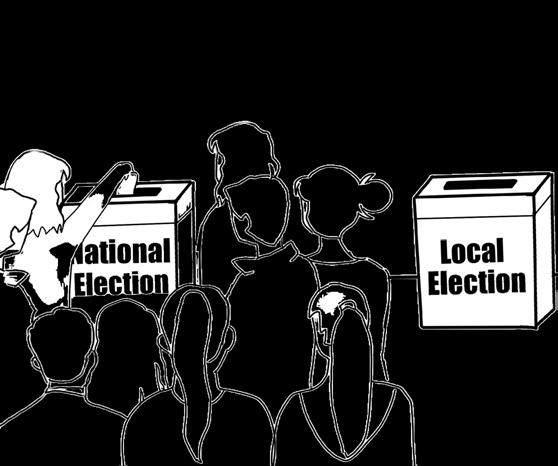
Turnout rates for national elections are significantly higher than they are for local elections.
California voters should also dedicate their attention to the competitive 26th district State Assembly election. Assembly members have a significant influence over policy making that affects our day-to-day lives, as they write and vote on state bills, and vote on the annual state budget.
By addressing relevant issues like housing, taxes and education, the State Assembly impacts Californians just as much as Congress. If voters truly want to see changes, they must make sure to use their vote where it counts.
To ensure that progress is continuing to be made at every level, voters must pay attention to more than just what’s happening in Washington. By starting within our own communities, voters at HHS and beyond can make the change we wish to see.
Ethnic studies requires necessary changes
Rushed ethnic studies course limits freshmen
By Danielle Feldsher
For the first time in California, students are taking ethnic studies, a class focused on the study of racial and ethnic groups and the relationships between them. The course is currently being piloted by freshmen in the 2023-24 school year, but will be a graduation for requirement with the class of 2030, according to the San Francisco Chronicle.
Introduced in 2019, the mandatory ethnic studies course has received backlash for excluding certain minority groups, according to EdSource. After revisions were made to the previous curriculum, making it more inclusive, the class added lessons on the Arab, Arme-
nian, Jewish and Sikh communities, according to the California School Boards Association.
While the topics covered in ethnic studies are important, districts and schools are still unprepared for this new addition. Although the enforcement of ethnic studies as a required course is quickly approaching, most teachers do not have specific credentials to teach the course, according to
CalMatters.
The multidisciplinary nature of ethnic studies makes it difficult to teach without a deep understanding of each topic, especially when the ideas covered are sensitive. Although educators teaching this course often have credentials in social science, this is often not enough to be prepared for the lessons taught.
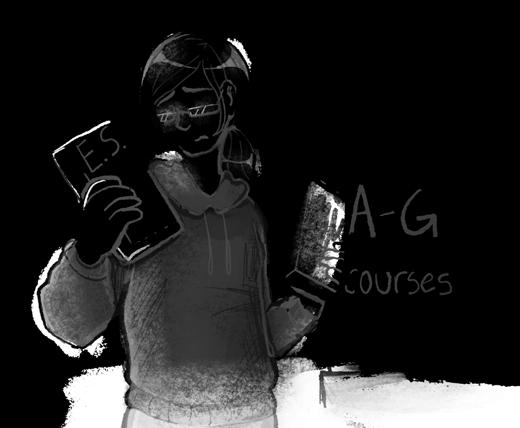
leading to amplified stress.
Without proper preparation by educators, the class will cause more harm than good, largely because of the rushed implementation of the program. With ethnic studies becoming a college requirement in six years, according to CalMatters, it is not possible for a thorough curriculum to be developed or for teachers to be well trained in the subject matter.
By contrast, Florida recently instituted a newly mandatory financial literacy course, aimed to educate high schoolers about money management. The bill has been in the works since 2007, adding up to 17 years since the idea was first introduced, according to the Tampa Bay Times. This gave schools ample time to prepare for the new course, something that the ethnic
studies course in California has not received.
The class does have its benefits, like providing students of every background with a broader world view. Nonetheless, the positive effects of the class are insignificant without proper execution of the course.
If this class was offered as an optional elective, it would not be a hindrance to a student’s everyday life, and would also mean fewer teachers required and less training needed. Freshmen are already limited in terms of course choices, and an ineffective but mandatory class is the last thing their schedule needs. With PE, a language and now ethnic studies, ninth graders are stuck between overloading themselves with academics or not exploring their interests.
Although the new ethnic studies course could be a beneficial addition to schools, it currently lacks the resources to be successful across the state. Instead of rushing to implement the class into California schools, leaders should prioritize qualified instructors, instead of taking up a valuable course spot for freshmen.
Epitaph Volume 61 · Issue 5 · March 8, 2024
The
Statement The Epitaph is a non-profit publication at Homestead High School, 21370 Homestead Rd., Cupertino, CA 95014. The Epitaph is a forum for student expression and not subject to prior review, in accordance to Education Code 48907. The staff is comprised of HHS Journalism students. Views expressed do not necessarily represent views of the school, its staff or the district. Editorials are opinions of the editorial board. The Epitaph welcomes letters to the editor but reserves the right to edit submissions. Letters should be limited to 300 words. Include contact information. Unsigned letters cannot be published, but names will be withheld upon request. Send via homestead.epitaph@gmail.com, or drop letters in the newsroom or the office mailbox. If The Epitaph has made an error, please send corrections to homestead.epitaph@gmail.com. The corrections will be published in the corrections box for the next issue. To reach the Epitaph staff in C102, call (408) 5222572 or fax (408) 738-8531. Advertising One email and you can reach over 2,400 students, teachers, administrators and community members from Northern Sunnyvale to Southern Los Altos. If your target market is between ages 14 to 18, contact The Epitaph at epitaph.ads@gmail.com, and we can make it happen.
Mission
to Our Donors
You
& Sam Boles
FUHS Foundation
Faye Hane
4 Opinion The Epitaph March , 202
PAGE DESIGN BY ANDREW FEKETE 8
4
ethnic studies mandatory, freshmen will have
limited schedule,
By making
a
Illustration by Faith Watters
Illustration by Annie Guo
Illustration by AnushrutiNagarajan
Let’s bring back quiet
Libraries are effective workspaces if respected
By Amanda Boles
As someone who struggles immensely to find environments where I can maintain focus, libraries have been my sanctuary. In a world full of distractions, libraries offer quiet, comfortable workspaces and good educational material. More recently, I have seen them evolve into educational hubs.
I used to believe I should only go to the library if I had to check out a book. However, aside from being an informational center, libraries offer great collaborative workspaces.
I appreciate this helpful function, but when I visit the library by myself, I cannot help but notice the distractions created by groups that are unaware of their surroundings, especially at our campus library. For a library to serve as a quiet learning space, it must be respected by all of its users.
In library tutorials, it usually takes about 20 minutes for normal conversational noise to die down. During this time, I find it hard to concentrate. Even in the
silent study area, where students work on tasks individually and do, in fact, stay silent, there is still plenty of sound bouncing around due to glass structures being coupled with many ongoing group conversations.
Many students are coming from classes where chatter is normalized, and finally get to choose a tutorial destination with their friends. Nonetheless, they should come in with the expectation that they are to be considerate of those who need a quiet space.
Short-term memory and attention performance decline more in higher noise level working environments with intermittent sound compared to the other noise conditions, according to a 2018 study by researchers at the Polytechnic Institute of Porto. If students need a space to converse with others, they should choose an appropriate location or keep their volume to a minimum so they do not disrupt other students’ studying.
Acknowledging the need for the library to be a quiet space is a step toward maintaining effective learning spaces that accommodate all students. There is only one library, and respecting its etiquette is crucial for maintaining it as a valuable resource for high school students.

Libraries have the potential to be productive workspaces, but are held back by unmindful behavior.
Redefining STEM gender norms
Girls in STEM must be given more resources
By Veronica Zhao
The stereotype that men perform better than women in science, technology, engineering and mathematics fields is a tale as old as time. Unfortunately, it is quite common for this gender-based stigma to leave an impact, and it certainly has at HHS.
The underrepresentation of female students in STEM can be shown through a gender breakdown of course enrollment. AP Computer Science has 23 female students to 69 male students and AP Physics C has 12 female students to 82 male students, according to data provided by data processing specialist Tricia Palomino.
Focusing on the ratio of boys to girls in STEM classes should not be the top priority. Although balancing numbers does positively contribute to equal opportunities in the field, it is crucial to examine the root of the problem: the lack of encouragement and support for girls in STEM.
The HHS community must promote the STEM to female students through more inclusive clubs. Clubs serve as a foundation for female students to explore their interests in a welcoming environment, which can encourage them to approach STEM classes.
Additionally, HHS can implement mentorship programs or resources to help girls navigate the challenges they might face in the field, including access to female professionals in STEM or support groups where girls can share their experiences. Through access to internships or career guidance programs, female stu-
COVID-19 should not be forgotten
State COVID-19 choices are irresponsible
By Annie Guo
Although COVID-19 cases are still rising, schools are lifting the majority of their restrictions intended to stop the spread of the virus. While restrictions and regulations can be inconvenient, the safety of students and staff must remain a priority.
Even four years after the pandemic began, COVID-19 remains a highly contagious disease that must be taken serious-
to an email sent to all FUHSD students. Students and employees who test positive for COVID-19 without symptoms can now attend school and work without a mandated five-day isolation period.
Although the state has decided to lift stricter restrictions, the number of people infected with COVID-19 is continuing to increase at a steady rate. Globally, the number of new cases increased by 4% between Dec. 11, 2023 and Jan. 7, 2024 compared to the previous 28-day period, with over 1.1 million new cases, according to the World Health Organization. The CDC must implement rules that can permanently control the spread of this illness.

Allowing COVID-19 to spread will reverse the progress made toward improving the pandemic. It is irresponsible for state leaders to become lenient with regulations, as our community listens and trusts their instructions. They must set a correct example for us to follow, even if
dents can boost their confidence and skills in STEM.
This case of underrepresentation of female students at HHS is not just a local issue. It serves as a glimpse of a larger problem where women are consistently undervalued in STEM fields. Women only make up 33% of researchers and less than 20% of STEM leadership positions, according to UNESCO. These numbers are significant as they give evidence of the generational barrier women face in STEM, and highlight the urgent need for change in these fields.
The persisting gender pay gap is a prime example of a broader consequence of this bias. Women in STEM fields continue to earn nearly $15,000 less than their male coworkers each year, according to AAUW, which proves the systematic nature of discrimination in the workforce. Moreover, creating new technology that is representative of all users
requires the inclusion of female voices. For example, health-related technologies such as heart monitors or smart watches often have default settings based on male physiology, according to Nature. This can lead to inaccurate assessments of women’s bodies during menstrual cycles, which can have serious implications for their health. These issues could have been prevented if more female designers had been involved in the earlier development of these products.
It is essential to strive for change, and long-term strategies must be implemented to bridge the gap between men and women in STEM. Acknowledging the effects of underrepresentation is crucial, as it can lead to missed

Ensuring equality for women in STEM must start with clubs. and resources at school.
A false pretense
By Zeinab Rakhshandehroo
backlash for the inconvenience exists. Although the CDC has implemented vaccine guidelines, and there are better ways to monitor the disease than there were in 2020, COVID-19 is still a real and harmful illness, killing an average of 1,488 U.S. citizens each week, according to ABC News.
Having fewer restrictions combating the spread of COVID-19 is especially dangerous for people with respiratory issues. Elderly people are especially at risk of the disease — the number of deaths among people over age 65 is 97 times higher than the number of deaths among people ages 18-29, according to the CDC. More lenient rules around COVID-19 can lead to the risk of many people contracting the illness, especially the most vulnerable members of our community.
In addition to harming elderly people, COVID-19 also impacts the lives of people with low incomes. Low-income families that cannot afford health insurance struggle to afford care to combat COVID-19. Due to the nature of their jobs, social distancing can also be difficult and risks their exposure to the virus.
Despite the fact that there still are some restrictions regarding COVID-19, stricter, more effective recommendations should be reinstated to put a halt to the ongoing COVID-19 pandemic. This illness is not just another statistic in a newspaper — it is an illness that affects the health of everyone around us.
Upon checking the news, one is overwhelmed with political analysis articles and polling statistics — a clear sign that election season has officially arrived.
Lack of candidates is harmful to democracy political participation. If a citizen does not support either of the two major candidates, they may often choose to forego voting in an election, according to Pew Research Center. As voting is the central way people influence the government, a decrease in such participation will lead to people’s voices remaining unheard as well as their issues being overlooked.
Often referred to as the “lifeblood of democracy,” elections are a vital part of the American government system, providing citizens with the opportunity to elect officials who will fight for their needs and desires in government. Yet, recent elections have been significantly harmed by the limited choice of candidates, and this upcoming presidential election is no different.
The United States maintains a two-party system, meaning that despite the existence of other parties, there are only two viable candidates in presidential elections, a Democrat and a Republican, according to Britannica. This system is detrimental to democracy, as it significantly reduces voters’ autonomy when selecting who to represent them in government.
Due to these limited options, candidates do not truly represent the American public. With only two candidates, voters’ choices are severely restricted. People can be obligated to vote for a candidate they do not truly support simply because they are a better option than the other candidate. Thus, the needs of citizens are ignored, allowing officials who do not align with the people’s wants to gain power.
This restriction of choice among voters further harms democracy by discouraging
The government cannot address the people’s needs if political candidates do not accurately reflect public opinion. The United States must adopt a more effective electoral process allowing for more diversity among candidates. Currently, the United States utilizes a winner-take-all system that ensures large political parties dominate elections and government.
On the other hand, proportional representation allows for small parties to have a say in the legislature, promoting a diversity of voices within government. By shifting to a system with proportional representation, the U.S. can adopt the multi-party system practiced in many Western European countries.
By expanding our government from its restrictive two-party system to a more equitable procedure with increased choices, we can ensure all voices are and will be heard.
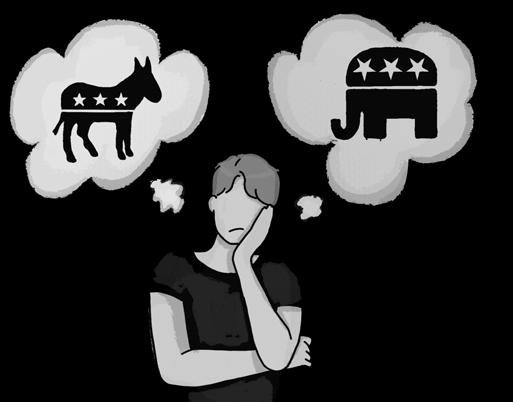
March 8, 2024 Opinion The Epitaph
5
PAGE DESIGN BY ADAM ORRIN AND FAITH WATTERS
It is vital people continue to wear masks, social distance and quarantine when experiencing COVID-19 symptoms.
The two party system results in elected officials who do not truly represent the American public.
Illustration by Zeinab Rakhshandehroo
Illustration by Amanda Boles
Illustration by Veronica Zhao
Illustration by Annie Guo
Captivating college-prep classes
An easier course is not a useless course
By Parth Dhaulakhandi
As my friends bug me about course selection, describing the difficulty of the numerous AP and honors courses they plan to take next year, I reconsider my own course load for the umpteenth time. Personal and external expectations reveal themselves to be a double-edged sword, serving as both the source of my motivation and an impediment toward my decision-making skills.
The competitive nature of schools like HHS is quite prominent, a notion made clear by academic statistics. Our district ranks 60th out of 10,932 school districts nationwide, according to Niche’s ranking system, fostering a cutthroat academic environment.
As a result, students looking
to outperform their peers stigmatize college-prep courses, branding them uncompetitive. Unfortunately, this pressures students like me to feel select rigorous courses that may not be the best fit for them.
This mentality also advances the negative stereotypes surrounding these courses, undermining their true value. In fact, this can even cause problems with academic dishonesty, as the pressure to perform can easily drive students to sacrifice their integrity to succeed in classes they are unprepared for.
Since, generally, college-prep classes are not as difficult as AP and honors courses, it is easy to forget their value. For example, in several of my required classes, I have seen students turning in shoddy work and expecting a good grade, focusing their attention on other subjects. This further amplifies a common misconception
among students: required college-prep courses are useless.
Instead of falling victim to these unspoken social expectations, it is important to recognize the benefits of college-prep courses.
Firstly, college-prep courses provide students with leeway in their schedule, allowing them to focus their time and energy on a few specific subjects instead of stretching themselves thin by tak ing many AP and honors classes. In addition, these courses often ef fectively teach concepts that may have been harder to understand in an advanced course.
For example, I have found my current college-prep world history class to be quite enlightening.
od while genuinely enjoying learning the content. Since I was not faced with the pressure to perform with total perfection due to the relatively relaxed grading system, my critical thinking and reading skills improved naturally.
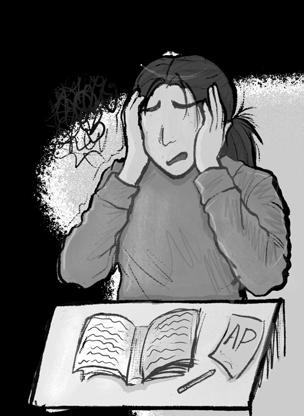
College-prep courses offer valu able insight
into their respective subjects. Without a focus on pure academic success, classes that teach important content in a less rigorous manner are often more rewarding.
We must value our college-prep courses, as their lessons and ideas can be more rewarding than those of advanced
Before the class, I had rudimen tary knowledge about the World Wars and the politics surrounding them. However, I found myself absorbed with the political atmosphere of the time peri- College-prep courses foster better learning environments than AP courses.
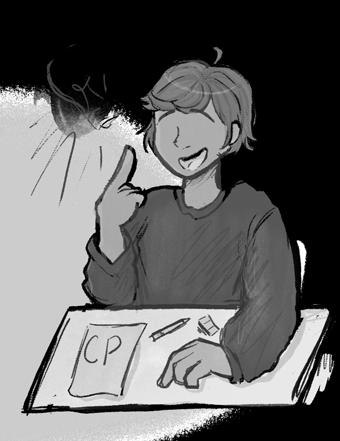
Is assigned seating purely for teachers’ convenience?
Free seating boosts student potential
By Mikha Pilar
Walking into my first-ever day at HHS only five days after I moved to California was scary, to say the least. Suddenly, I was faced with unfamiliar faces, buildings and teachers. Though overwhelmed, I knew I had the chance to make a safe space of my own through the seats I chose in my classes.
Being given the option to choose my own seat maximizes my comfort. Whether it is a specific spot in the classroom or specific people in the class who make me feel safe, free seating helps alleviate my stress when inside that classroom. Feeling uncomfortable in a new environment prevents me from expressing who I am, and it can reflect in the quality of my work.
Many issues contribute to the discomfort I feel with assigned seating. Worries of making a good first impression on my tablemates loom over me. People who I will be seated with are often a complete mystery, leaving me without any clue on what to expect. This results in me forcing myself to be closed off, as I am afraid of coming off negatively.
As classes go on, people slowly get more comfortable and reveal new sides of themselves. This can end up in two ways — the table group either builds a connection and everyone gets along, or it gets into some kind of disagreement, resulting in an uncomfortable mood.
motivated to attend class and work on my assignments. Instead of feeling motivated to be part of the class, I felt excited for the bell to ring so I could go home.
A positive school environment directly contributes to good school performance, according to the National Center on Safe Supportive Learning Environments. It improves academic performance, as well as attendance. In the classes I have really enjoyed, the overall energy and environment have been the main reason I felt motivated to dedicate my time and effort.
Free seating gives the freedom of choice.
It is an opportunity to create a space that caters to you and your needs by sitting near a window for the sunlight or in a cool spot. Being given the option to choose where to sit provides me the opportunity to ease myself into the environment of the class, as the guarantee of light, carefree air around me in a class period motivates me to work even more.
At the end of the day, school remains in session whichever seat you take. But to many, there is nothing more comforting than knowing that someone is willing to go through the horrors of schoolwork with you.
Assigned seating benefits teachers, students
By Mackie Vu
As a mostly reserved person, I rarely go out of my way to make small talk. However, when teachers assign me a table to work in for the unit, I often try to get along with them, because I know that it may be the start of a friendship. Despite the awkwardness that fogs the atmosphere in the beginning, assigned seating proves itself to be beneficial for both teachers and students.
Initially, some people may assume assigned seating only exists to fit the needs of teachers, but they fail to understand the reasons why choosing to sit next to friends can do students more harm than good.
First, being around friends encourages socialization while a teacher
is lecturing. These conversations, which should be held during brunch or lunch, serve as a distraction to not only the person involved, but the people around them, as well.
Distractions make learning more difficult, because mastery requires deep concentration, according to an article by Oregon State University. Assigning seats ensures these inconveniences are minimized and an optimal learning environment is maintained.
Assigning seats also provides the opportunity to form new connections. Usually, table groups are forced to work on projects together, which creates a perfect environment to make friends. Personally, I find many people, including myself, also make group chats to help each other with homework in class. For example, in my AP biology class, I was in a table group that made a group chat in the first month we met each other. We still use the group chat to discuss almost every assignment, even though we now sit in different seats.
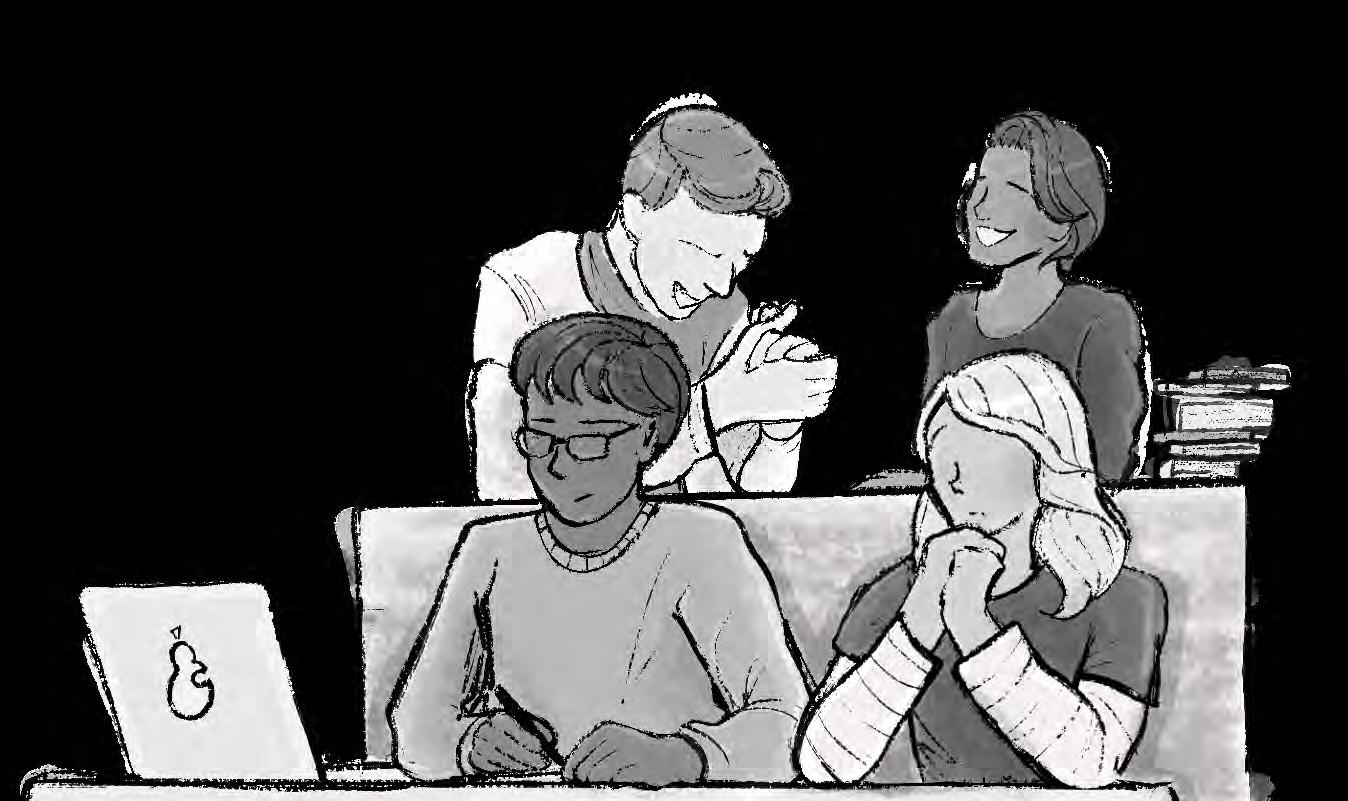
I have personally experienced a bad table group environment as a result of assigned seating, and it made me feel less While assigned seating can be a perfect way to make friends, some may be uncomfortable around new people.
Assigned seating also prepares students by giving them skills needed in the professional world. In a business atmosphere, individuals must be able to work with any of their coworkers, and assigned seating in class allows students to gain the critical flexibility that will be necessary in the future.
Usually, when I enter a class at the beginning of the year, I can only recognize a few people I would comfortably come up to. But when school is about to end, I find not just myself, but many others talking to people we would not usually talk to. While assigned seating may seem restrictive at first, it ultimately enhances our educational experiences,
Electric vehicle restrictions burden student drivers
By Annabelle Yip
EV parking rules should be loosened available at school is necessary, administration should not require charging. It costs $6 to charge the average electric vehicle, according to Octopus Electric Vehicles. This, paired with the cost of the parking pass all students much purchase, creates a financial burden for students who may not even need to charge their cars but are forced to.
Recently, administration has cracked down on usage of electric vehicle parking spaces in the student lot, stating these spaces must be occupied by currently charging electric vehicles, according to multiple emails sent to students.
Students in violation of these rules have begun receiving warning notices on their cars, and administration said they may also impose additional consequences, according to those emails. But these measures are simply unnecessary, adding to the list of obstacles student drivers face when finding parking every day.
While having electric charging
In an ideal world, electric drivers could park in a regular spot if they do not want to charge, but it is not always that easy. As a driver myself, it is hard enough to find parking in the morning, especially with the influx of sophomores who are getting their licenses.
There are countless students who purchase parking passes, yet park in the neighborhood simply because the lot is so packed. When finding parking is already an issue,
enforcing these rules leads to a student lot that looks like an island of open electric parking spaces only feet away from lines of vehicles circling around and around.
Particularly for students who have an empty first period, or are returning to school after an open period, finding parking in a completely packed lot can be stressful.
For instance, one of my friends has an empty first period, and I remember when she had to circle around the lot looking for a space for her gas vehicle. She finally settled on the only open spot, an EV space, deciding that the risk of a warning was less important than making it to second period on time. When the struggles of the student lot begin to negatively affect our education, it is time we rethink these guidelines.
Ultimately, people drive to school in the car they do be-
Now, administration must do the same — provide a student lot ready crowded lot, many electric drivers will be forced to park in
hicle spaces should be limited to those vehicles, they should not be required to charge so all drivers, electric or not, can make it to class
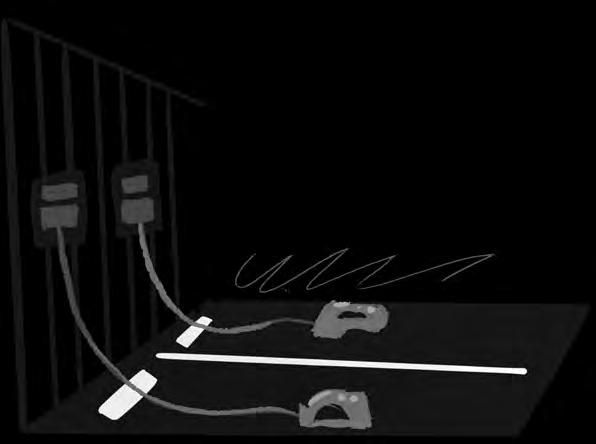
March Opinion The Epitaph 4
PAGE DESIGN BY NICOLE PIMENTA INNECCO AND CATHERINE YANG
8, 202 6
electric vehicle drivers to charge their cars at school only worsens the hectic environment of the student lot.
Forcing
Photo by Kevin Miao
Illustration by Faith Watters
Illustration by Annabelle Yip
Fitting into gendered spaces
Students examine reason clubs have gender majorities
By Maya Dutt and Aviv Matas
While clubs are a fun way to meet new people and do things you love, gender disparities can impact people’s experiences, former math club member, senior Mira Haldar said. These disparities may occur due to reasons such as gender stereotypes and club environment, Haldar added.
Haldar said she joined math club as a freshman and during that time, was an active member, but stopped going afterward. Haldar said that as a girl, she often felt isolated by her peers because everyone was focused on their individual progress.
“When I fell behind, I didn’t want to ask [other members] for help because I thought girls asking for help could be annoying,” Haldar said. “I did not get the vibe that anyone wanted to help me.”
Haldar said she thinks the gender inequalities in most clubs stem from how boys and girls are raised.
“Girls are socialized to be more in a community and helping people out [while] guys are more socialized for these really individualistic competitions,” Haldar said.
However, Haldar said this environment is not the standard for all math societies. Mu Alpha Theta, the math honor society, has a group-based approach to math and feels more inclusive to girls, Haldar said.
“I think the fact that [math club and Mu Alpha Theta] are separate implies that the more competitive math should be relegated to men while the more community-oriented math is equitable,” Haldar said.
Another example of this is chess club, which lacks female members for many reasons, such as lack of outreach and the overwhelming presence of men in the field. president, senior Mark Vernik said. He said this disparity is a problem and girls are discouraged from joining because of it.
“[When] you see a male-dominated space, it creates a perpetuating cycle,” Vernik said.
Girls aren’t always the ones being marginalized in clubs, crochet club co-president senior Sarmyshta Vaddi said. Boys can be in the minority as well, especially in clubs that focus on more traditionally feminine things, Vaddi added. Like Vaddi, crochet club officer junior Robin Fischer said gender stereotypes are the problem.
“Crocheting and crafting are seen as feminine in our society,” Fischer said. “That creates barriers, especially for men to explore fun and relaxing hobbies.”
Another club with majority-female membership is Key Club, outreach coordinator sophomore Jemma Yang said, as
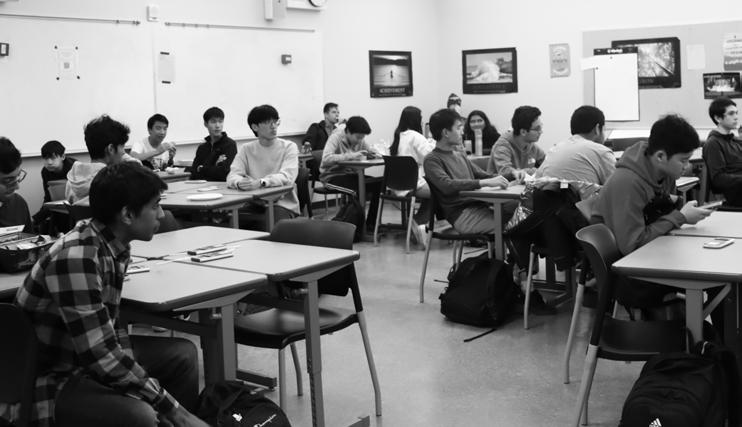
Freshmen mean business
Businesses reopen following success at Maker’s Fair
By Maya Dutt, Parker Lin and Naaga Senthil Anand
For the Maker’s Fair on Dec. 11, students of principles of business created a variety of businesses, media manager of Totes&Stuff, freshman Julia Geofferey said. After the mid-year break, the two businesses with the most sales resumed business, both selling tote bags, co-founder of Prints and Patterns freshman Maya Yatziv said.
The founders of both businesses are in the same principles of business class and are friends, co-founder of Prints and Patterns freshman Chloe Dahl said. Geofferey said, because of this, they have a playful rivalry between their businesses, which helps them strive to do better.
“We are both supportive of each other and we were making money for the business class,” Dahl said. “We just happen to be selling the same things.”
Geofferey said she got the idea to start Totes&Stuff from a friend who is now a sophomore in college.
“She had a thrifting shop that she opened through Instagram and that allowed her to get a business scholarship in college,” Geofferey said. “I also thought it would be a good little side hustle to get money.”
Freshman and co-founder Perennial Ong was the one who planted the seed for Prints and Patterns, Dahl said.
“We landed on embroidery because Perennial did cross stitching,” Dahl said. “We tried to find
supply it to people.”
Originally, Prints and Patterns sold tote bags, 3D prints and some crochet scrunchies during the Maker’s Fair, but they have started to sell more specific products for their reopening, Yatziv said.
“Now we are selling custom-made stickers, embroidered or painted tote bags and art,” Yatziv said. “At the moment our target audience is Homestead craft people.”
Totes&Stuff paint and stamp their products while Prints and Patterns embroiders them, Yatziv added. Yatziv said the stamps give Totes&Stuff a more consistent quality and less creativeness with their tote bags. Though Prints and Patterns tote bags are less uniform, the uniqueness of each differentiates them from Totes&Stuff, Dahl said.
“Embroidery [takes] a lot of time,” Dahl said. “It takes hours going back and forth in the same place and making sure everything is neat and done. We also have additional things like embroidered handles and other elements to add to and enhance the tote bag.”
Both businesses are also trying to shift to larger audiences, Yatziv said. Geofferey said Totes&Stuff is exploring new ways to sell their products to aid their expansion.
“What we are working on right now is going to an actual market, maybe a farmer’s market or a handmade crafts market, getting a spot and then actually trying to sell there,” Geofferey said. “We are also planning on figuring out a delivery system so we can [sell] our products [to] people who live further away.”
Yatziv said she would like to continue running Prints and Patterns for as long as possible as it has grown into a newfound passion.
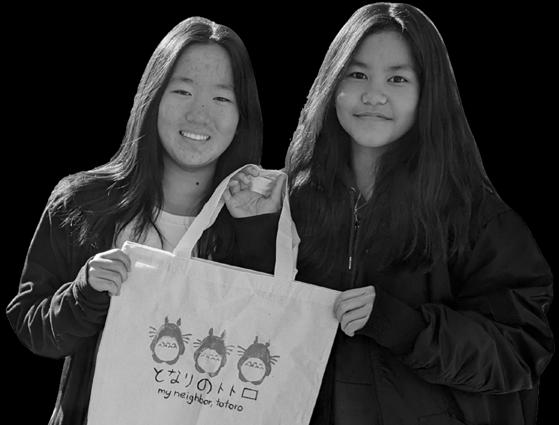
“There was a lot of adrenaline and rush in preparing for [Maker’s Fair] and selling things,” Yatziv said. “That kind of adrenaline just went on, [It’s] something you want to experience again, the fun of selling and providing things for people.”
Likewise, Dahl said the rivalry between Prints and Patterns and Totes&Stuff helps her stay motivated. “We are working towards a common goal of just being the best,” Dahl said.
all of the officer team and most members are girls. Yang said she attributes this to members inviting their friends, who tend to be girls.
“There were four boys in the hallway, and when they peeked in they saw a room full of girls and left,” Yang said. “ It is discouraging to them.”
Examining the problem as a whole, Yang said some of these gender inequalities could be a school problem rather than a societal one. Yang added she noticed other schools didn’t seem to have the gender inequality that HHS Key Club has.
“Other clubs in our division have males in their club,” Yang said. “In fact, the new lieutenant governor of our division is a male. I think it really depends on our school and advertising to the right population.”
Vaddi said she is trying to find ways to attract more boys to crochet club through outreach and offering a variety of crochet club activities.
“If I put up a pattern on how to make a shirt, maybe [boys] would be interested in joining, but it is all a ‘what if’,” Vaddi said. “We don’t know what the male audience is interested in so we can’t advertise for them.”
Crochet club co-president and senior Alexa Ochoa said she hopes the gender barriers in her club would lessen.
“I would like to see our audience expand so that everyone feels welcome, because they are,” Ochoa said.
Shining light on an unnoticed language
Learning Hebrew strengthens connections to culture
By Danielle Feldsher and Annie Guo
While most students learn Spanish, French, Chinese or Japanese at school, another language often goes unnoticed, Hebrew student sophomore Libby Dover said. Hebrew is a unique language offered at HHS, with its interesting structure and immersive curriculum affecting a large part of the Israeli community, Dover said.
The class takes place on campus from 6-9 p.m. and educates students from various schools in the area, Dover said. Learning Hebrew differs from other languages in a multitude of ways, Dover said.
“The class is less about grammar and more talking about real world issues,” Dover said. “We learn a lot about culture and Israel, as well as Judaism.”
As a student simultaneously taking French and Hebrew, Dover said the latter class has a special atmosphere, unparalleled to any other language. Because everyone is friends, students are able to form deep connections with each other and the language, Dover said, resulting in a light-hearted environment.
Similarly, Hebrew teacher Shlomit Ben-Levi said her students’ strong bond is an integral part of the class and allows her to further enjoy the teaching process. When students are open to participation and collaboration, BenLevi, whose interview was originally conducted in Hebrew and translated to English, said she is able to connect with them.
“The students are really nice, they cooperate and the classes are really funny,” BenLevi said.
More im-
portantly, learning Hebrew is especially critical during a time of crisis for Israel, Ben-Levi said. With the Israel-Hamas war still prevalent in students’ lives, they are able to use the language as a tie to their home country, Ben-Levi said.
“It’s very important that we learn about it in class,” Ben-Levi said. “[Learning Hebrew] strengthens the connection to Israel and the feeling of belonging to the Jewish and Israeli people.”
Sophomore Noa Ackerman, a student at FHS, said the class is essential for many reasons, one being the improvement she makes in her reading and writing skills.
“It’s important to know the language that most people in our community speak and helps me to connect with our native land,” Ackerman said. “It helps me with things like speaking to my family, my grandparents and the people I know in Israel.”
Moreover, Ben-Levi said Hebrew is an ancient language that has connected and led the Jewish people for thousands of years. Ben-Levi said, continuing to speak it is undeniably important, and it is essential to maintain by reaching youth. Ultimately, Ackerman said the community in the class is exceptional. Students are able to discuss with classmates that they love, leading to an inviting atmosphere in the room, Ackerman added.
“It’s unique because the environment feels like home,” Ackerman said. “We’re friends, we speak the same language, it just feels good.”
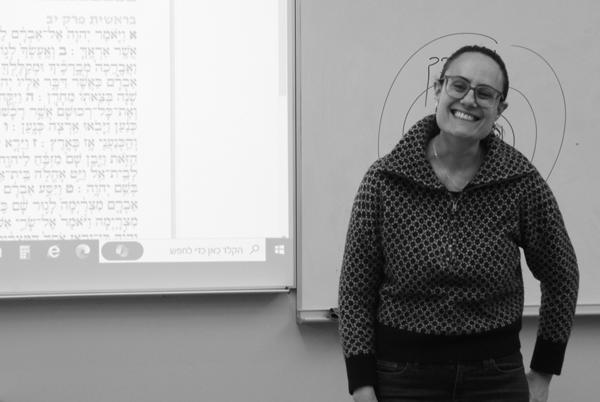
March , 2024 Lifestyles The Epitaph
7
PAGE DESIGN BY PARKER LIN
Freshman Olivia Kim said Totes&Stuff helped her further understand entrepreneurship.
Hebrew teacher Shlomit Ben-Levi said she tries to plan interesting and relevant lesson plans to keep classes fun.
8
Senior Mira Haldar and her friend are the only girls to attend a math club meeting on Feb. 12.
Photo by Maya Dutt
Photo by Aviv Matas
Photo by Danielle Feldsher
As students mistreat campus resources, it often falls on teachers and administration to take responsibility. Campus mistreatment, including breaking school resources and vandalism, is disrespectful and destroys our campus, community members said.





Math teacher Bethany Mathews said she purchases whiteboard markers to give stu dents a break from using pen and paper. Mathews said students mistreat her white board markers by doodling, leaving the caps off and pounding them.
Q&A:
Science teacher Samuel Fung said beakers offer students hands-on experiences during science labs, but are fragile and easily broken when students are not careful. Fung said the science department must purchase new beakers when they break to support the students’ academic activities.
What forms of campus mistreatment do you see?


Community members share ways they witness disrespect on campus
Staff share their opinions, experiences with vandalism on campus

The cost of irresponsibility
Looking into the prices to replace damaged school resources

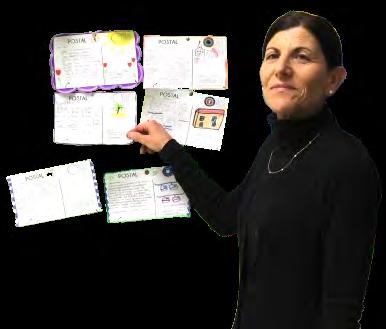

Terri Fortson, food service manager
“The thing that frustrates [me] is when students cut in [lunch and brunch] lines. Sometimes other kids think that they’re more important than other kids, [but] we have enough food for everybody. [Also], when students mistreat the equipment like the forks. They’re single dispense forks and people just keep hitting it and forks go all over the floor, and that’s just wasteful.”
Gabriela
“[I feel frustrated] when [my students] talk over me. [They are not] present in what we’re doing. [I wish my students would] interact with their classmates in a way that is constructive to the class and being present, being here and part of our learning community.”
Melissa
“If you’re going to drink any kind of liquid in a hall or any place outside of the quad, try not to spill it on the ground. It’s really gross when you have to find your way across the chocolate milk puddle. Do your best to make sure all trash actually gets into a trash bin.”
Not just a drawing
By Elena Shim and Helen Tam
Across campus, vandalism appears in a multitude of ways. Whether students are trying to express themselves or have bad intentions, vandalism has a harmful effect on the campus community, principal Greg Giglio said.
A significant form of vandalism on campus is the writings on walls and in bathroom stalls, Giglio said. There are instances where it becomes a serious issue and legal actions need to be taken, but oftentimes, vandalism takes the form of thoughtless tags in bathrooms that can easily be cleaned off, Giglio said.
Despite this, Giglio said vandalism still has a detrimental effect on HHS. The school allocates money for the maintenance facility, but that is for toilet paper, cleaners, mops and scrubbers, he said, not vandalism expenses.
“We need to buy stuff to clean and fix the school,” Giglio said. “If we have to take money out of that to pay for [vandalism], then that is a bummer.”
History teacher Christy Heaton said she has not seen much vandalism around campus recently, but she is aware that it is a continuous issue.
Heaton said she believes vandalism has a negative effect on the school environment and is a dangerous destruction of property.
“Vandalism [makes other students] at school feel less safe about being on campus,” Heaton said. “[For example], some of it can be antisemitic or inappropriate.”
Heaton said this illegal activity not only damages school property but also requires funds for cleanup, which could have been used on improving campus and supporting other school activities.
Occasionally, Giglio said students tell administration which students are vandalizing because they get tired of seeing vandalism on walls and walking into messy bathrooms.
These actions are not without consequences, Giglio said, and the administration has implemented various measures to track vandalism

In-depth The Epitaph 8
Photo by Elena Shim
Balas, Spanish teacher
Clark (10)
department wein said she so her students culations faster, they are scribbled taken out of said she has calculators using funds. $15 $10
Math
$1.80
Photo by Elena Shim
Photo by Elena Shim
Calculator: Beaker: Marker:
Photo by Elena Shim

Esswein


Physical Education teacher Kyle Bonvechio said although they try their best to keep track of their equipment, students forget or refuse to return items to their proper locations. Bonvechio said he or other PE. teachers have to purchase new equipment.



drawing

and issue consequences. For example, pictures of vandalized property are taken and stored in files, Giglio said. If there are patterns, staff members are asked to help identify and ultimately catch the culprit.
“We might send [pictures] out to staff and ask if they have seen similar annotations on notebooks or papers,” Giglio said. “Or we might search someone’s backpack because they were accused of vaping and we happen to catch them for vandalism.”
Dean Anthony Nguyen said deans decide consequences according to the severity and disruptiveness of the vandalism.
“Usually, we will call home and have a conversation with their parents,” Nguyen said. “Or we give students time-out from specific restrooms, banning them from using those restrooms because they’re not using it correctly.”
On the topic of whether or not vandalism can be considered freedom of expression, Heaton said she does not align with individuals who consider vandalism freedom of speech because, in her view, it is simply harmful.
“[Those who vandalize] have no ethics or morals,” Heaton said. “They are too afraid to actually express their freedom of speech in a productive way, so they do it in an unproductive way.”
Similarly, art teacher Tyler Cripe said he does not think students engage in vandalism as a means of expressing themselves.
“I can probably count on one hand the amount of students who have the maturity to express themselves through vandalism, and none of them are the ones doing it,” Cripe said.
Instead, Cripe said vandalism is more representative of social media trends than an individual person’s artistic creativity.
“[On TikTok], trends like Devious Licks encouraged vandalizing school property,” Cripe said. “Destroying bathrooms and making bad decisions, those are not individual choices by individual people; those are brain viruses.”
Administrators and staff should make efforts to prevent students from continuing vandalism on campus, Cripe said.
“One thing that is true about vandalism is that as soon as it starts, it will continue,” Cripe said. “If somebody writes on the wall, somebody else is going to write on the wall — it’s a slippery slope.”

Next level graffiti
Delving into graffiti as a form of art




The Oceanwide Plaza development in downtown Los Angeles, a one million dollar project that was abandoned in 2019, is a skyscraper now covered in sky-high graffiti on every floor, according to the Washington Post. It has captured the world’s attention, as well as the police department, which continues to catch suspects making their mark on this building.
5Pointz was one of New York’s cultural landmarks that was demolished in 2013, according to NPR. This graffiti museum was a warehouse complex covered with spray-painted art. Millions of people visited the work that spread across a block in Long Island City (NPR). In 2020, nearly two dozen artists won a $6.7 billion lawsuit against the developer who destroyed the building, according to the New York Times.
Epitaph PAGE DESIGN BY ELENA SHIM, HELEN TAM AND MACKIE VU
Photo from The Art Newspaper
5Pointz Photo from The Washington Post ILLUSTRATIONS BY ELLA CHAN, ELENA SHIM AND HELEN TAM The Oceanwide Plaza department lead Angie Essshe provides calculators students can perform calfaster, but many times, scribbled and drawn on or the classroom.
has to order replacement using math department 9 In-depth $35 $15 Bathroom stall door: Basketball: Calculator:
Inspiring through a phone lens
Senior Mizuki Koyama hopes to make a positive impact on her followers
By Mackie Vu
Beginning as a way to share her life with her grandparents in Japan, senior Mizuki Koyama now makes content for over 11,700 followers, to whom she is known under the Instagram and YouTube user name hopefrommizuki. Koyama, who began posting on Instagram and YouTube after moving to the United States from Japan last year, said her content focuses on capturing the everyday life of a typical teenage girl.
“I used to enjoy video editing programs like iMovie [in elementary school],” Koyama said. “So, I wanted to pursue that little passion that I have besides academics.”
Koyama said she has enjoyed watching vlogs since she was young, which is what inspires her lifestyle-based content. When she was younger, Koyama said she did not prefer watching content from people who were wealthier than her.
“They’re rich and you can’t relate to them because you don’t have that kind of money,” Koyama said. “So I used to watch these vlogs by normal teenage girls who tried to make the most out of everything they already had — that is the type of content that I want to make.”
Despite recently moving to the United States, Koyama said it is her second time living here after moving from Japan when she was only four years old and moving back to Japan at 11. Koyama said she felt unstable during these constant changes, but eventually got used to it and learned to look at the positives.
“I used [social media] to try to make the most out of everything that I had,” Koyama said. “I wanted people like me [who] were scared of moving abroad or struggling in an unstable condition [or] environment [to know that I was] there for them, in a way, like letting them know that they’re not alone.”
A video Koyama is especially proud of is a New Year’s guide, which garnered a few million views, Koyama said.
“I’ve struggled a lot in the past and I would find these videos really helpful where they would give you a guide of what to do in order to organize your life,” Koyama said. “[I was proud that the video] hit a few
million views, and I think it helped over 300,000 people because that’s the amount of people that liked it.”
Along with these positive moments, Koyama said she has experienced some negatives like a video about a rally receiving negative attention, which is something she did not expect.
“There were people like, ‘Why would you glorify United States high school when it’s the worst place you could ever be,’” Koyama said. “I was so surprised because that was the first time I encountered really negative people. They weren’t really mean toward me but pretty disrespectful to each other, so I turned off the comment section for that one because that scared and disappointed me.”
Despite the negativity, Koyama said her friends supported her and eventually convinced her to unarchive the video after she had archived it.
A friend of Koyama, senior Sammie Kameda, said she not only partakes in Koyama’s videos but is inspired by them.
“I like her way of thinking of mental health because she presents the ups and downs in life and she’s pretty open about it,” Kameda said. “Ever since I met her, I thought more about my mental health and wellness.”
Guidance counselor Raquel DeJesus, said she worked closely with Koyama when she first came to HHS.
“I listened to [Koyama’s] questions, I listened to her feelings… of anxiety and not really knowing what was going to come next,” DeJesus said.
Since then, Kameda said she has seen positive growth in Koyama and her content.
“She’s gotten more confident and outgoing,” Kameda said. “She has a really bubbly personality, so I feel like she’s just more confident in sharing, like, anything.”
All in all, Koyama said she wants to be a light for those who stumble upon her content.
“I promise I’m really just a normal girl and I don’t know what I’m doing half of the time,” Koyama said. “So I try to be positive and try to make a positive impact.”
The Epitaph
Peeking into teachers’ duties
Teacher assistants help alleviate workloads
By Elena Shim
From sitting nervously during an exam to now organizing a teacher’s piles of papers, teacher assistants, often called T.A.s, work with teachers to complete little tasks, helping them shift their focus to current students, math teacher Matthew Guevara said.
“I can now use my time to create more dynamic lessons [and] to create a better learning environment and learning activities for the students, instead of recording numbers or organizing papers,” Guevara said.
Biology teacher Natalie Della Santina said having an assistant in her class is a relief to her, as they are not only a big help, but are ex-
emplary students who can support freshmen throughout the challenges they will face in the class.
“It’s almost like they’re another teacher in a way,” Della Santina said. “Sometimes, students even like interacting with T.A.s more than they do with the teacher, which is good for the students. It helps me, too, because they’re getting some of the help they wanted.”
Junior Saydee Blandini, who works with Guevara in his precalculus honors class, said she initially signed up to be an assistant to boost her GPA, but through the experience, gained a broader perspective on the subject.
“Being a T.A. is fun because I have to go to that class but it’s never something I stress about,” Blandini said.
Della Santina’s assistant sophomore Vedashree Singh said she wanted to become a T.A. for biolo -

A fusion finale
Indopak’s Windian team celebrates their seniors through dance
By Jonathan Xue
While South Asian music mixed with Western elements blares from a speaker, a group of seniors with varying dancing experience hit the stage for a final time. The Windian dance team is a senior-only team that specializes in the Bollywood fusion genre of dance, team captain, senior Sania Khanzode said.
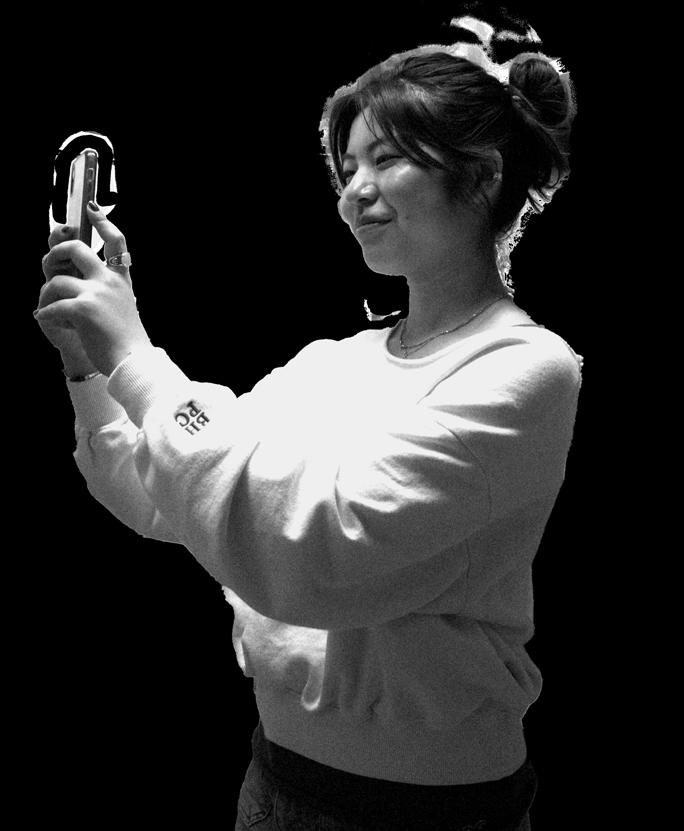
Practice for Windian starts in the second semester when seniors have lots of free time and it provides an outlet to express and learn about South Asian culture, Khanzode said.
“It’s a really good experience for seniors who haven’t had a chance to join other teams,” Khanzode said.
The Windian team is different from other Indopak teams as it does not have tryouts or cuts, Khanzode said. Additionally, the Windian team is very flexible on how much members are required to learn, so those who want to can do more, Khanzode said.
“Our main goal is just for everyone to have a really good time and have fun,” Khanzode said. “The Windian team is about building good relationships with your teammates as opposed to just putting out a really good performance.”
Khanzode said Windian members have a mindset of branching out and trying new activities, with a main goal of fostering a positive and welcoming environment for everyone.
gy and seize the chance to explore her favorite subject from a different perspective.
“From being a T.A., I learned how important organization is,” Singh said. “Also, it’s really good for me because I get to review my previous biology concepts.”
Blandini said although T.A.’s receive a lot of freedom in the classroom, this does not mean they lack responsibilities or do not do work.
“It really depends on what you sign up for. I am just lucky that Mr.Guevara doesn’t make me do much,” Blandini said. “It’s not a bad or good thing. It just depends on the teachers because some teachers don’t need a lot of help.”
Guevara said that while T.A.’s may have a lighter workload compared to other students, they are willing to be productive and are ready to complete any work assigned to them.
“It is absolutely wrong that people say T.A.’s do nothing,” Singh said. “Yes, we don’t have the pressure to do things, but we don’t have to be always working, which is why we can have some free time.”
Della Santina said there are limits to the tasks assistants can do, as administration has restricted teacher assistants from doing any tasks involving grades.
Singh said along with gaining new experiences, by being a T.A., the role has helped her make meaningful connections with Della Santina.
“I get close to the teacher because you talk about a lot of things and you also have to experience how her job is,” Singh said. “Oftentimes, I don’t think normal students have the opportunity to experience that.”
The Windian team focuses on celebrating seniors and providing one last chance for them to step outside of their comfort zone and try something new before graduation, team captain, senior Saahil Kotwal said.
“We hope that people realize it’s not so scary to dance and that they can try something new even if it’s in the last months of school,” Kotwal said.
The team includes a variety of skill levels with some experienced dancers from various dancing backgrounds and other members who have never danced before, Kotwal said. Some members are already in other Indopak teams or dance teams, Kotwal said, so the Windian team is a blend of different skill sets.
“As a captain, I just want members to feel welcomed when learning dancing and be fearless to just try it out and do what they can,” Kotwal said. “Every practice member comes in motivated and wanting to improve for a good performance in Sapnay.”
Dancer, senior Arnav Chakravarthy said he had very little prior
experience with Indopak and was initially hesitant to join the team. However, Chakravarthy said the officers and captains made it extremely easy and accessible for even a novice like him to join and learn.
“Compared to other Indopak teams, people like me make Windian look a little less talented than other teams,” Chakravarthy said. “But I’d still say the team is definitely as hype and energetic as other dance groups.”
The team captains have done such an excellent job of organizing practices given the lazy mindset of seniors in the second semester, Chakravarthy said. The captains make everyone feel welcome and do a great job of teaching the choreography, Chakravarthy said.
“I have loved being a part of this group and I think it was a great idea to bring together seniors at the end of their high school journey,” Chakravarthy said. “I have gotten closer to a lot of my classmates that I may not have otherwise [known] and learned more about myself than I ever have from dancing.”
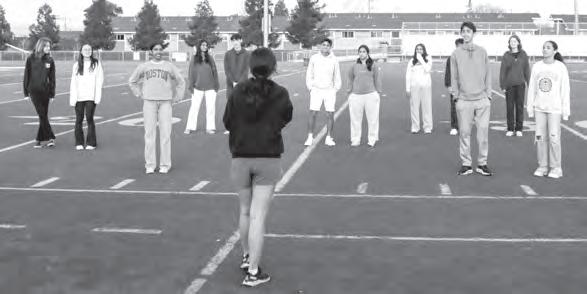
PAGE DESIGN BY BRIAN LING AND MIKHA PILAR
A part of creating content for her followers is taking pictures and videos, which senior Mizuki Koyama said she does often.
10
Lifestyles
Sophomore Vedashree Singh said that from being a TA, she learned many ways to help others understand difficult material.
The Windian team is excited about their one and only performance at Sapnay on March 2, team captain Sania Khanzode said.
Photo by Jonathan Xue
March 8, 202
Photo by Elena Shim
4
P h o ot yb eikcaM
uV
Putting numbers on creativity
Art teachers, students reflect on challenges in grading
By Ella Chan and Helen Tam
Art courses are one of the few classes where students can escape from tests, labs and presentations. But this makes grading in these classes a challenge because art is mainly subjective and each student’s creativity is expressed differently, ceramics teacher Jodi Johnson said.
In ceramics, it is difficult to get a perfect score, but it is not hard to get an A, Johnson said.
“I would consider myself an easy grader, as long as you are participating in class and completing the projects,” Johnson said.
Projects are graded on five things: craftsmanship, creativity, skill, effort and completion, Johnson said.
When these categories are combined, Johnson said it makes it easier for students to feel successful because art doesn’t come naturally to everyone.
“I am grading on your skill coming in and how hard you are working to improve,” Johnson said. “It is not just based on a rubric but also how you perform in class.”
Ceramics student, sophomore Franklin Nguyen said the grading is somewhat difficult because it is fast paced and there are always
new techniques to learn.
“The bare minimum will not get you a good grade, you have to go above and beyond,” Nguyen said.
However, Nguyen said this pressure does not motivate him; rather, it restricts his creative freedom and creates a constant concern about grades.
“Usually I have to make a project for the grade, rather than something I like,” Nguyen said.
The rubric for projects is mainly based on requirements, with only a few points for creativity and craftsmanship, Nguyen said. Because of this, Nguyen said there are many different components that make up his grade, allowing him to compensate in other areas if he does poorly in one category.
Art and 3D sculpture and design teacher Claire Dee said grading is one of her least favorite things to do as an art teacher.
Dee said she tries to make all requirements for a project clear to students before she begins grading by giving them the rubric when she introduces the project.
“I will speak for all of us teachers when I say that we want everybody to get 100 and A’s, because it is just a goal of ours as teachers,” Dee said, “but, if there are missing requirements we will take points off and justify why we did that.”
In her experience, Dee said students often only take an art class because it is a graduation requirement. They discourage themselves
by not believing they are creative, Dee added, often doing the bare minimum for a passing grade.
“I try to remove the talent part, which is what students believe is how you get an A, [and instead] break things down into steps,” Dee said.
Rather than emphasizing skill, Dee said students can excel in her class through dedication.
“The secret recipe to a good grade is working hard,” Dee said. “If you come in, ready to work, not falling asleep on the table and just working, you will succeed.”
Dee said she wants grades to reflect the effort students put into the class. In doing so, Dee said she hopes students are able to grow as artists, rather than focus on the grade they earn.
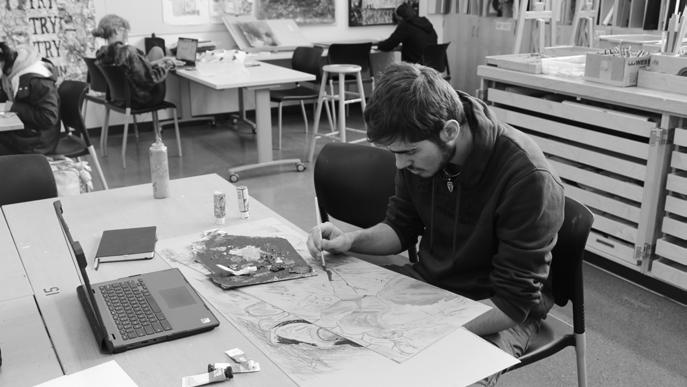
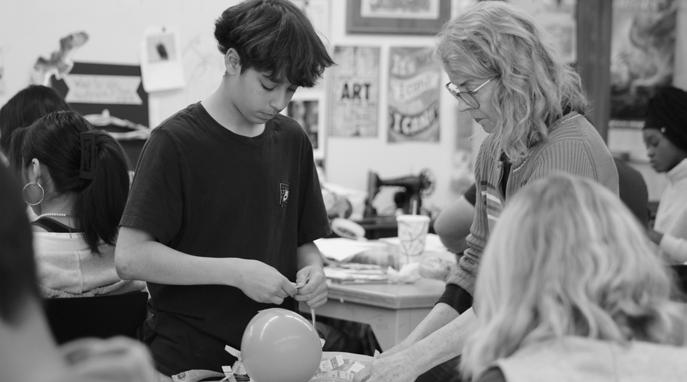
“When I first started teaching, grading was easy,” said Dee. “But over the years, I have seen what students can do, especially when you give them ideas that they are going to be excited about.”
Bringing light to past shadows
Women’s history month inspires awareness within the community
By Mikha Pilar and Annabelle Yip
As flowers start to bloom and the sun comes out, another significant event happens to indicate the beginning of March: Women’s History Month. Celebrating the history of women who have broken barriers is important, Women’s Empowerment Ambassadors (WEA) vice president, senior Emma Fiedler said.
“In history, it’s especially recognizable that women don’t get as many opportunities as men do,” Fiedler said. “So celebrating all the achievements that women have done and everything that they’ve overcome to get to those points, that’s really special.”
Looking to March, the club plans to hold a meeting specifically relating to Women’s History Month, president, senior Maia Lee said, as well as a possible social.
Though Women’s History Month only lasts 31 days, WEA celebrates women’s history yearround through its club meetings, Lee said. Lee said their meetings generally cover one specific topic about women, including the topic’s history and current implications, before giving members the opportunity to answer prompts and discuss their thoughts with others.
For Fiedler, these member discussions have been a beneficial aspect of the club, as it has allowed members to engage with each other and speak their minds.
“We’re really focused on building community, so the discussions are a really big part of [the club] this year,” Fiedler said. “We’ve seen a lot more people interacting with others in the club, and then also voicing their own opinions about
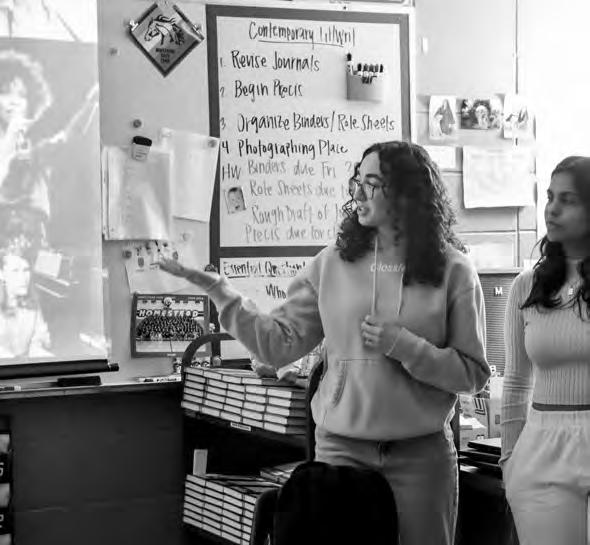
the different topics that we present about. It’s more about getting other people’s opinions going rather than us just talking at [the members].”
Additionally, Fiedler said it is essential to have members of different backgrounds, so discussions can allow members to hear and share various perspectives.
“Having such a diverse group of people is really important for our meetings because feminism is so multifaceted,” Fiedler said. “There’s just so many ways that people can interpret things. Everyone’s voice is important.”
Similarly, Lee said it is especially important to recognize underrepresented women who have contributed to specific areas of study that have been primarily dominated by men.
WEA adviser, English teacher Megan Rupe said even though women are not considered a minority, the population remains underrepresented in most fields.
Rupe said she, along with other literature teachers, aim to include more female-authored texts in their classes, because it is important for students to learn from diverse female authors and expand their worldview.
“Third wave feminism is about elevating the voices and issues of women of color that have historically been kept in the shadows,” Rupe said. “So, including their voices empowers our students to use their voice.”
For Rupe, celebrating women’s history month is necessary to recognize the barriers women have faced throughout history and the types of obstacles women continue to face today, Rupe said.
“It is important for the reason that women have been underrepresented, our voices haven’t been seen as equal,” Rupe said. “The ways in which society cuts us down are now very subtle and nefarious. And so, it’s important to acknowledge that and talk about it.”
Looking back on stormy weather gloom
Students, staff share how power outages affect their moods
By Parker Lin and Anushruti Nagarajan
With power-less evenings and gloomy days, recent winter storms create a somber atmosphere for students and teachers alike, senior Thea Gomard said. Additionally, social studies teacher Kelly DiNucci said it provides stress and a sense of dread within learning environments.
During the storms, DiNucci said she lost all power in her building, including the emergency electric system, which trapped her inside her home. Being stuck at home with no power not only affected her ability to work, but also negatively impacted her well-being, DiNucci said.
“It’s very unnerving when there’s so much planning that goes into daily lessons [and] something unexpected comes up like that,” DiNucci said. “It’s very stressful, because you’re not there with your students.”
Junior Ruben Contrerez said the most recent power outage lasted an entire week, forcing his family to purchase a generator to
allow his family to have electricity to work from, as he was getting behind on school work.
“It was difficult [to catch up on schoolwork] because teachers didn’t think I had a reason to fall behind,” Contrerez said. “[Storms] affect everybody, even at school. People don’t really want to go to class, or go to lunch or brunch. We just want to get through the day and then go home.”
In addition to academics, rainy weather lowers students morale, Gomard said, as it discourages students from going outside or spending time together.
“I barely saw my friends because we were all huddled up in different parts of the campus hiding in cars to get away from the [rain],” Gomard said.
Gomard’s birthday landed on a stormy day, and turned from an exciting, fun-filled day to eating food with some friends in the gloomy weather, she said “It was my 18th birthday and all I wanted was to be surrounded by all my friends, for us to all be holding hands singing Kumbaya, the sun shining behind us,” Gomard said. “But the world had other plans for me. And it was just symbolizing me becoming an adult as something depressing and dark and gray.”
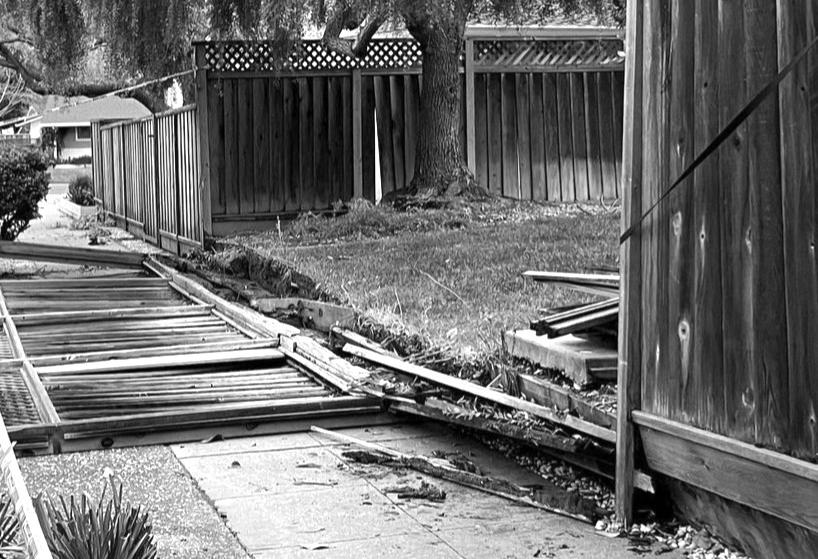
PAGE DESIGN BY LINDSEY STEEL Lifestyles The Epitaph 11
March 8, 2024
The stormy weather caused unexpected disruptions in students’ daily routines, Contrerez said.
Photo by Lindsey Steel
Art teacher Claire Dee said she grades art projects with the expectation that students will work hard and succeed with her support.
Photo by Annabelle Yip
WEA vice president Emma Fiedler leads a discussion about the impact of female artists in the music industry during a club meeting.
Photo by Mikha Pilar
Photo by Nathan Gu
An illusion of progress
White feminism is toxic, ignores women of color
By Zeinab Rakhshandehroo
Feminism appears to be surging in pop culture, but a vital factor is often overlooked: women of color have had little say in this discourse.
White feminism is a form of feminism specifically directed toward white women that fails to acknowledge the experiences of women of color, according to NPR. This toxic form of activism has been on the rise in recent pop culture, reaching its peak with the release of “Barbie.”
The acclaimed film has been celebrated for its feminist messages and portrayal of women’s experiences. Yet, its plot centers around a white narrative, focusing mainly on the struggles of a conventionally attractive white woman.
For instance, the movie aims to explore the detrimental effects
of the sexualization women experience. Yet, women of color often receive disproportionate amounts of hypersexualization. As “Barbie” highlights a white woman, however, the full scope of this harmful experience is not conveyed to audiences.
This lack of acknowledgment is more disappointing considering the several opportunities the film had to acknowledge women of color. “Barbie” features many characters of color, yet fails to provide them with impactful storylines to convey their experiences as women.
For example, Gloria, Barbie’s guide in the real world, is Latina, yet none of the challenges she faces as a woman of color are conveyed on screen. She instead serves the purpose of teaching the white Barbie about the challenges she faces, which ultimately reinforces a white perspective. Though there is diversity in terms of casting, the movie lacks diversity of experiences — it includes characters of color but refuses to convey meaningful messages through them.

White feminism is also prevalent in pop culture surrounding the movie, most recently with the outrage surrounding the Oscars snubs of the director, Greta Gerwig, and lead actor, Margot Robbie. The internet has been in a frenzy
The simple satisfaction of online gaming
Low-stakes games are fun and convenient
By Parth Dhaulakhandi
COLUMN — Whether it is grinding through a battle pass or collecting resources to unlock skins and levels, most games have ways to slowly progress over large periods of time. With in-game currency and storage of progress, games tend to use long-term goals to keep players playing.
Oftentimes, people forget the simple joys found in more basic and shortterm games.
Although they are easy to overlook, on line games like “Slope” and “Slither.io” have profound impacts on gaming culture. Despite lacking a con crete way to ensure their longevity, these games have found their way to fame as a result of the cheap thrills they provide.
Lately, I have found myself play ing such games in my spare time, whether that be at school or while taking a break from homework. Straightforward yet engaging, they provide me with the perfect leisure opportunity, and fill in boring moments in life with enjoyment.
over the lack of Oscar nominations for the two women, with many arguing against the injustice and sexism they say it represents, according to BBC.
Though this backlash may seem a positive step for the recognition of women in the media, this exaggerated criticism is incredibly harmful. The passionate vitriol over these snubs is drawing attention away from the incredible achievements made by women of color this awards season.
For example, Lily Gladstone made history as the first Native American woman to be recognized in the Best Actress category, an incredible landmark for Indigenous representation. Furthermore, America Ferrera, an actress in Barbie, has become one of the few Latina women to receive an Oscar nomination. Yet, the attention placed on two white women is overshadowing these historic moments.
Though it is important to advocate for women’s recognition, it should not come at the expense of women of color. By placing such emphasis on the snubs of Margot Robbie and Greta Gerwig, accomplished actresses of color have been overlooked and their achievements ignored.
A film cannot be the pinnacle of feminism yet overlook women of color, and a white director and actress should not be praised while disregarding the accomplishments of actresses of color. White feminism is a false form of empowerment that ignores intersectionality and harms women of all backgrounds. Feminism is for all women, so it is essential that the stories of women from all backgrounds be respected and represented.
The
pilot that made it
is “Basket Random,” a two-player game with simple controls and an even simpler concept. If I have a friend to play with me, this game is perfect for short breaks, especially when I lack motivation to begin long tasks.
Games like “Basket Random” provide a unique user experience by allowing players to indulge in an easy-to-understand game while not being bored. However, the main characteristic that stands out for me is the fact that it continues to be entertaining despite containing no long-term goals. These games work into the schedule of a person instead of eating from it. Although they lack some benefits of larger games, like elaborate worldbuilding and complex plots, they are still quite entertaining. By allowing easy access to gaming almost anywhere, online games impact gaming culture through their small yet frequent appearances in a person’s life.
Fashion trends WE WILL REGRET in five years...
CUTTING COLLARS
A perfectly good neckline, ruined. Now you will forever have cold shoulders and half a crewneck. Get your money’s worth, wear it how it should be worn.
BIRKENSTOCK CLOGS
Arguably the world’s most ugly sandals, these have been trending for too long. There is no reason for them to be so trendy and popular. Get better shoe game.
BOWS, BOWS, BOWS!
First polka-dots and emojis, then peace signs and mustaches and now bows? It always starts as an innocent trend, until it starts showing up on everything...
JORTS
Frankly, jorts are too long. They often look ill-fitting, and only a few people can truly pull them off. Let’s leave jorts in the ‘90s — they went out of style for a reason.


MINI PLATFORM UGGS
Your future self will thank you for avoiding these ankle breakers. You won’t be a Mustang in five years, so get ahead of the curve and say no to these horse hooves!
‘Argylle’: a huge swing and miss
Lack of storytelling sinks bland adaptation
By Jonathan Xue

Even if they make for a more powerful experience, games that ask for too much involvement are not always the most fun to play. Instead, through online games like “Basket Random,” gamers can strive to enjoy the simpler things in life.
One personal favorite of mine
A hurtling car nearly misses the villain’s face, and seconds later, John Cena grabs her by the collar off a speeding motorcycle. With its distorting special effects and loosely connected plots, “Argylle” perfectly encapsulates the strengths and weaknesses of director Michael Vaughn’s filmmaking style.
Unlike typical noir spy thrillers, Vaughn’s style utilizes mind-bending CGI in its slow-motion fight scenes and includes disconnected plots featuring convenient, funny action. Ultimately, his style generates superficial, though undeniably fun, films such as “Kingsman” and “Kick Ass.” “Argylle” follows this formula with the same lack of attention to storytelling.
“Argylle” is a mix of successful spy films — a sort of meta-analysis on iconic aspects of past film series. With the acting of “Fast & Furious,” the styling of “James Bond” and the storytelling of “Kingsman,” Vaughn leaves audiences with the impression of a spy thriller, but not a unique adaptation of author Elly Conway’s book. The movie fails to reverse engineer the best aspects of other movies and ends up as a forgettable and unoriginal failure.
“Argylle” is a testament to Hollywood’s greatest misunderstanding: an enormous budget and a cast full of A-list actors does not automatically result in an enjoyable product. However, its failings cannot be attributed solely to lackluster performances by its famous cast, as each standalone performance is acceptable. The problem stems from the fact that Vaughn focuses too much on fight scenes with special effects and too little on the plot.
The lack of a strong plot should not be attributed to the source material either, as Conway’s book presents one of the most unique takes on the spy genre to date. The book centers around an author who enters the espionage world after writing a spy novel, the events of which also take place in the real world. However, Vaughn’s
constantly shifting narrative muddles the viewer’s understanding of Conway’s genius, exaggerating out an already long 139-minute run time.
While Henry Cavill’s haircut and Alfie the cat are hilarious touches, the fun I had was marred by the movie’s incomprehensible plotlines and predictable outcomes. “Argylle” had the chance to be a self-aware mockery of the action genre, but ends up only exemplifying the same faults viewers grow tired of seeing each year. It is incredibly disappointing to see Vaughn, who is known for great movie adaptations, fail so grandly and inexplicably as he does in “Argylle.”
Movie: “Argylle.”
Grade: F. Rated PG-13. Watch in theaters.

PAGE DESIGN BY ANNABELLE YIP The Epitaph March , 2024
Actor Henry Cavill sports a vile haircut as the cheesy protagonist.
12 Arts & Culture
8 Photo from Deadline
Photo from Apple TV+
Infographic by Ella Chan, Helen Tam and Annabelle Yip
Read about the independently animated pilot “Hazbin Hotel.”
“Barbie” fails to acknowledge the stories of women of color, making it an example of white feminism.
The horrors beyond the wall
‘Zone of Interest’ unveils the everyday evils of Nazi Germany
By Adam Orrin
Smoke flies high as a red glow covers the night sky and shines through the commandant’s windows. Blinded by the belief that they are superior to those living in the concentration camp, the family of the commandant of Auschwitz goes about their everyday lives, unaware of the weight of their actions.
On Feb. 2, the film “Zone of Interest” was released, taking inspiration from the 2014 novel of the same name written by Martin Amis. The movie follows Rudolf Höss’s time managing Auschwitz, a notoriously cruel concentration camp from World War II. Höss and his family go about their day-today lives, living comfortably despite the cruel nature of their duties at Auschwitz. The film’s main conflict surrounds Höss’s promotion and how his family grapples with his departure from the concentration camp.
Amazingly, a large portion of the film was completely improvised, with multiple cameras placed around the house constantly filming the actors.
Instead of using a solid script, the movie captures realistic moments by making the actors improvise in character.
One of the most stand-out performances in the film comes from the supporting roles of Höss’s children, played by Johann Karthaus and Luis Noah Witte. They serve an important purpose in the film, representing the evil they inherited from their environment. The children’s minds have been so severely twisted by their upbringing that the brutal condition of the prisoners fails to evoke compassion in them.
The sounds of
the gas chambers churning can be heard throughout the movie, allowing viewers to distinctly hear the atrocities the family so easily ignores. Throughout the movie, “Zone of Interest’’ strives to recreate the sounds that could have been heard around Auschwitz, from passing trains to ringing gunshots. This contrasts the eerily peaceful world built around Höss and his family, making viewers experience the same sense of normality that the commandant had become accustomed to.
This movie does more than tell a story. Instead, it makes me deeply question whether all humans are capable of terrible evil, along with what drives them to these ends.
“Zone of Interest” shows the evil actions of the Nazis in a unique light, portraying them as ordinary people whose actions are not fueled by conviction but instead are cogs in the machine of totalitarianism.
“Zone of Interest” will not have you in suspense or catch your attention with flashy cinematography. Instead, it will capture your heart and mind through its thought-provoking and chilling re-creation of World War II.
Movie: “Zone of Interest”
Grade: A. Rated PG-13 Watch in theaters.
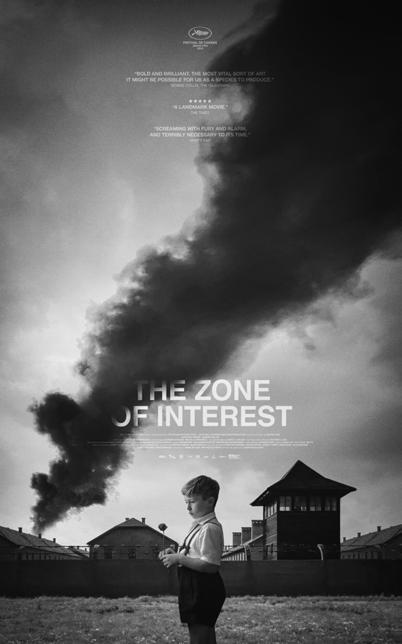
Underrated Artists: Clams Casino
Proving producers deserve more respect
By Saira Ahmed
COLUMN — Recently, I have been questioning why I still enjoy the songs I have on repeat. The artists usually have amazing vocals and lyrics, but I always come back for more because of the instrumental and overlaying of sounds. These, along with other choices that the singer does not tend to make, all come back to the talent of the producer.
They work their magic behind the scenes and are not immediately named in the song credits found on Spotify or Apple Music. This leaves the average listener oblivious to the invisible hand that made that track so mesmerizing.
For example, I was surprised to find the producer of “I’m God,” Clams Casino, was also behind my favorite A$AP Rocky tracks, “LVL” and “Demons.” The sonically similar hints were there all along, but it would have been hard to discern this without knowing beforehand.
As much as I love A$AP Rocky’s artistry and voice, “LVL” would not be the amazing song it is without Clams Casino’s touch. The instru-
mental is futuristic and haunting — traits found in all of his work — only adding to the unique, almost creepy nature of this track. It trails off with A$AP Rocky and Alana Haim’s eerie vocals, showcasing Clams Casino’s iconic and magical production techniques.
“I’m God,” my first introduction to Clams Casino’s work in 2020, showcases all his production abilities. The song is captivating, containing samples of Imogen Heap’s “Just For Now,” layering mystical qualities with a steady backdrop.
It is such distinctive elements within Clams Casino’s beats that elevate any artist’s vocals, from A$AP Rocky to Mac Miller to The Weeknd. In a world full of lazy, repetitive beats, his talent for sampling and storytelling is refreshing.
After delving into Clams Casino’s work, I now believe all music lovers should question why they love the songs that they do and find the creatives who were
part of that process. Discovering producers like him opens the door to understanding talent beyond a singer or rapper’s voice. Ultimately, taking the time to research and listen to their other work encourages further success of the producer while giving you more tunes you are bound to enjoy.

The day the music died
TikTok’s contract dispute with UMG results in muted songs
By Sanah Arya
My favorite part of the day is winding down and scrolling on my phone, checking for texts and exploring social media. But as I opened TikTok, it became increasingly obvious that most songs had been muted.
Taylor Swift. Drake. Lana Del Rey. Ring a bell? These headline artists are fan favorites, both on the radio and in the media. But due to the expiration of a licensing deal between TikTok and Universal Music Group, many songs by these musicians are no longer available for use on the app.
UMG said they wanted appropriate compensation for their artists and songwriters, protecting them from the harmful effects of AI and online safety for TikTok’s users, according to a letter UMG wrote addressing artists. Conversely, TikTok said UMG was being selfish and greedy, caring more about their business interests than
Demanding more meaningful films
Modern movies tend to remain surface level
By Elena Shim
Searching for good movies to watch now takes longer than actually watching them. Whether they be pointless remakes of old films or unnecessary sequels, movies have traded their original splendor for profit.
Films such as “Maleficent,” the “Beauty and the Beast” remake and the “Star Wars” series were initially popular, with “Star Wars” making a gross profit of $2 billion, according to IMD. The initial popularity of such content naturally led to overproduction, which in turn led studios to forget the true purpose of movies: conveying deep messages and educating audiences.
Many recent films, especially
superhero movies, tend to rely on visual appeal to draw attention and shock viewers. In fact, Marvel, after producing over 40 sequels, has invested at least $350 million on CGI effects per release, according to the Academy of Animated Art.
With this extreme focus on graphics, the plots of sequels remain underdeveloped. Instead, by using financial and human resources to create new films and develop new ideas, studios should introduce diverse characters, explore different narratives and push the boundaries of storytelling.
Disney, a pioneer of the movie industry known for its variety of impactful films, has recently been creating numerous live-action adaptations of its past work. Unfortunately, its remakes of “Mulan,” “Cruella” and “Little Mermaid” fail to live up to my expectations, as
their altered characters lack depth and often fracture the original stories.
On the other hand, older movies tend to rely more on the plot due to a lack of CGI technology at the time. These movies have allowed me to see society through unique lenses, helping me unravel characters’ emotions more clearly. Moments from such movies were crucial in shaping my morals and learning to appreciate others in society.
In particular, movies like “Forrest Gump’’ and “I Am Sam” have introduced me to the hardships of mentally disabled adults, showcasing the challenges they face in the world. They helped me understand the actions and feelings of those who are mentally challenged, as well as the mistreatment they face. Furthermore, they helped me appreciate my own circumstances
the creators they represent, many of whom actively use the social media platform, according to USA Today.
TikTok accounts for just 1% of Universal’s revenue, according to the company, meaning that TikTok’s users and artists take the biggest blow. The loss of a wide catalog of sounds means artists can no longer promote their mu sic to the app’s one billion us ers, especially people like me, as a study by MusicWatch found that 25% of TikTok users discover new songs through the app. I also find a lot of new music and artists through TikTok, so this limits the expo sure of songs that I add to my music rotation.
Moreover, many popular dances, jokes, and trends have been greatly impacted. More than
one-third of TikTok’s most popular songs have been removed, such as Drake’s “Rich Baby Daddy” and Lana Del Rey’s “Let The Light In.” With these gone, the trends I love so much lose their charm, and I feel less prompted to scroll through TikTok, making the best part of my day less gratifying.

Without their soundtracks, so many videos and skits lose their magic. As an interactive music platform, it is disheartening to witness the recent issues and restrictions TikTok has faced.
Hopefully, UMG and TikTok can find their shared rhythm again, since without its vibrant creators and diverse music, the app is losing its once playful and appealing charm. songs due to the end of the partnership with UMG.
more, fostering gratitude for my life.
“The Shawshank Redemption” was also sensational, as it helped me observe life from the perspective of prisoners, showing me the sad and unethical realities of life as a convict. The tragedy and turmoil characters faced when let out of the prison was disturbing, as to them, they lost their home.

On the other hand, there was beauty in the movie, as they had friendship, loyalty and supported one another. The movie taught me to value my friendships and reassured me that there will be hope amidst the hard
The film industry must shift their focus away from graphics and focus on people who go unseen in society. Ultimately, this helps audiences understand those who are different from themselves and broadens their view of the world, one movie at a time.
Older movies are a reminder of times when movies gave depth toward unique characters rather than focusing on their visual appeal.
PAGE DESIGN BY ELLA CHAN AND HARSHI VIJAYAKUMAR Arts & Culture The Epitaph
“Zone of Interest” creates an authentic and emotionally raw depiction of life at Auschwitz.
1
Producers like Clams Casino use instrumentals to elevate every song they work on.
March 8, 2024
Photo from A24
Photo Illustration by Saira Ahmed
bySanahA r y a
Illustration
To the next level
HHS athletes commit to college to pursue athletic, academic goals
Brooke Young commits to soccer at Dominican University of California
“They have a really good biochem program,” Young said. “It was close enough to home, too, because I still want my parents to be able to come and watch my games. I know some girls on the team, too.”

John Tahk commits to tennis at MIT

“It was between Caltech and MIT, [which are both] really good engineering schools, but I wanted to get away from California,” Tahk said. “The weather was getting a little boring, so I want to experience the East Coast for a bit.”
Jamie Nguyen commits to soccer at the University of Chicago
“I love Chicago in many ways,” Nguyen said. “I love the campus, the team environment and the coaches. They have a strong athletic and academic history, and it’s an amazing opportunity. I felt like I couldn’t pass this up.”
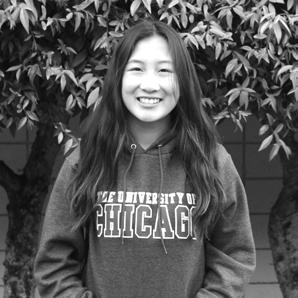
Girls soccer CCS win
Continuedfrompage1
“I threw my hands up in the air ... I felt very emotional,” DeJesus said. “I saw the girls dogpiling on top of each other. My legs felt very shaky but I was so proud of them. I did get teary-eyed… But it was just all smiles after.”
Captain Jamie Nguyen scored the only goal, assisted by McGoran. Nguyen said scoring the goal was the “peak of her existence.”
Althought it was initially supposed to be a different play, the players did not get the signal to carry it out, Nguyen added. Fortunately, Nguyen said she happened
to be in the right place at the right time to score the goal.
On the way to the first NorCal tournament game against Chico, Nguyen said the team performed exceptionally well, winning 4-0. They had a strong offense and backline, with goalkeeper Myley Markley preventing Chico from scoring, Nguyen added.
The team’s NorCal run ended in a 0-2 loss to St. Francis in Sacramento on Feb. 29 in the NorCal semifinals.
Looking back, DeJesus said the team’s positive relationships
Athlete of the Month
Junior Prasmit Kondawar makes strides as a leader
By Andrew Fekete
“Do what you gotta do so you can do what you wanna do.”
Junior Prasmit Kondawar, a sprinter and a captain of the track and field team, said he will always live by this quote by Denzel Washington from the movie “Remember the Titans.”
Even after high school and college, Kondawar said he will
Blowing the final whistle
Six football coaches depart, leaving deep cultural legacy
By Nathan Gu and Rajiv Venkatesh
After 19 years of coaching football, varsity head coach Milo Lewis stepped down at the end of last season, along with five other coaches on the team. During his tenure, which included 13 years as head coach, HHS accumulated 15 bell game wins and two CCS final appearances, Lewis said.
Departing alongside Lewis are JV coaches Raymond Souza and Greg Lee, as well as varsity coaches Tom Fernandez, Kristopher Smith and Shawn Hook.
Hook said that while he loves the sport after playing and coaching it for over 30 years, he decided to step down to support his sons, who are both playing college football. Meanwhile, Souza, the JV head coach, is stepping down to take a coaching job at De Anza College, Hook said.
“Coach Lewis did a great job,
but I think it was time for him to move on to something bigger,” Hook said. “Coach Souza is great, but he’s coaching at De Anza. It was just time for a change for Homestead.”
Lewis stepped down to pursue a coaching position at a community college and eventually at a four-year college. In the meantime, he said he will continue to support the team and run the weight room.
“We’ve had a lot of ups and downs, and it played its course,” Lewis said. “It was just time to go, but I love Homestead to death.”
Linebacker Andrew Li said he credits Lewis for building the team’s culture on a foundation of accountability, family and hard work.
“During summer conditioning, I showed up late and Coach Milo was not very happy with me,” Li, a senior, said. “I was confused, but I realized it was because you have to be accountable for your actions in life. It’s these little life lessons that he teaches you through this game of football.”
Through these lessons, Lewis said he and the other coaches
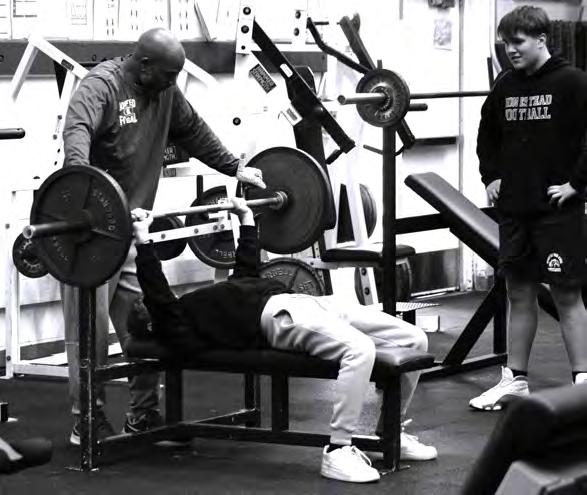
contributed to their success. The seniors ensured nobody felt left out, and the subs cheered players on in the games, which contributed to their wins, DeJesus added.
McGoran said four months ago, she would not have expected to be on a three-and-a-half-hour bus ride to play a state tournament for this team.
“I’m just super grateful to Raquel and all the other girls, because it’s been a super fun season,” McGoran said. “No matter what happens, I’m super proud and happy with what we’ve done.”
remember this quote as a coach leading the next generation of young athletes. He hopes it will teach them that anything they put their mind to is possible. Track and field sprint and hurdles coach Khoi Tran said Kondawar has great listening skills in digesting what is taught, which has helped him develop into a great leader. Tran said even when Kondawar is unable to practice, he still shows his dedication to the team by being a leader.
“Pras has been the prime example of what a dedicated athlete should be,” Tran said. “[He’s]
always show[ing] up, supporting his teammates and cheering for others. [When] we’re doing something, you can hear Pras’ voice on every single rep, which is rare.”
Teammate and hurdler, junior Keshav Ramamurthy said Kondawar is someone he trusts greatly on the track. He added that Kondawar is very vocal and creates a healthy environment for the team.
“He’s the most encouraging teammate ever,” Ramamurthy said. “If you’re not having a good day, Pras will make sure you’re
help players with challenges they encounter on and off the field. As a result, Lewis said his players have become part of his family, and he has become an honorary grandfather to many of his former players’ children.
“[My favorite part of coaching] has been getting to be at my players’ weddings and having them at my house,” Lewis said. “I’ve known many of them since they were 14 years old, and now some of them are 33, 36 years old.”
In his time as a coach, Hook said he has strived to teach players the importance of hard work, another one of the team’s core values.
“You just got to put the work in,” Hook said. “The harder you work, the better off you’re going to be. The more prepared you are, the better you have a chance of winning. There’s a lot of life lessons taught on the football field.”
After he retires from coaching, Hook said he will miss the camaraderie among the players, as well as the excitement of playing on Friday night.
“Football is a very tough sport,” Hook said. “It’s played by tough individuals, and they were great kids. They worked super hard, they were fun, their energy was great and the coaching staff was fun to be around.”
Of the incoming coaches for next season, Hook said he knows one, who is currently at Monta Vista High School, and another, former HHS player Craig Maynard. Hook said both of the coaches will be a great fit for the team.
Lewis said he hopes the new coaching staff will uphold the values of accountability, hard work and family the current coaching staff have worked to instill in the players.
“I hope my successor understands what [PE teacher and former head coach] Charlie [Bostic] built in 2000, and what I kept going,” Lewis said. “I hope my successor just keeps it going in the right direction.”
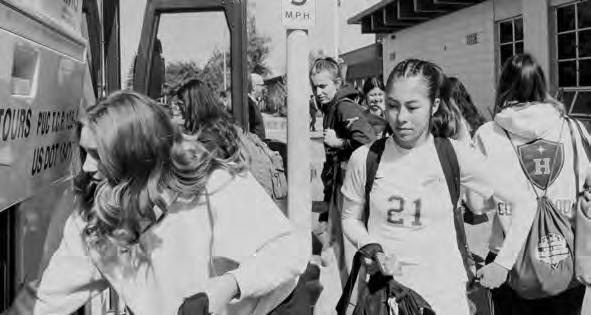
having a good day. He’ll make you work hard and do your best.”
As a captain, Kondawar said he hopes to be a leader and show the players hard work pays off. Although he is not yet a coach, Kondawar said he wants to ensure everyone is focused so they can be the best players possible.
“At the end of my career, hopefully I make a legacy here,” Kondawar said. “People will come back and see Prasmit Kondawar went here. So, in the future, whether that’s track, football or academics, I just want to be remembered in Homestead history.”

March 8, 2024 Sports The Epitaph 14 PAGE DESIGN BY ALICIA LISTE AND EVELYN WANG
Outgoing varsity head coach Milo Lewis helps athletes train in the weight room, where he continues to work after stepping down as coach.
Photo by Nathan Gu
PhotocourtesyofBrook e Young
Track and field captian Prasmit Kondawar said he hopes his younger teammates look up to him.
Photo by Nathan Gu
Photo by Elena Shim
The varsity girls soccer team boards the bus to their game against Chico on Feb. 27, where they won 4-0.
Photo byNathanGu
PhotobyNathanGu
Infographic by Nathan Gu
SOmething that inspires me is...
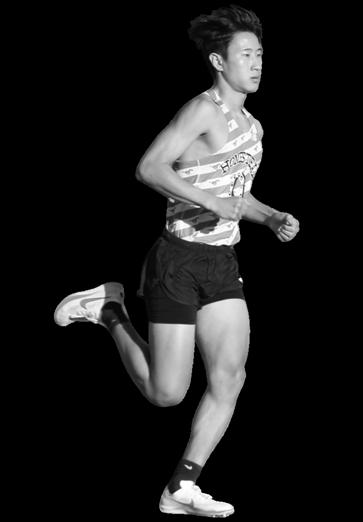
boys volleyball
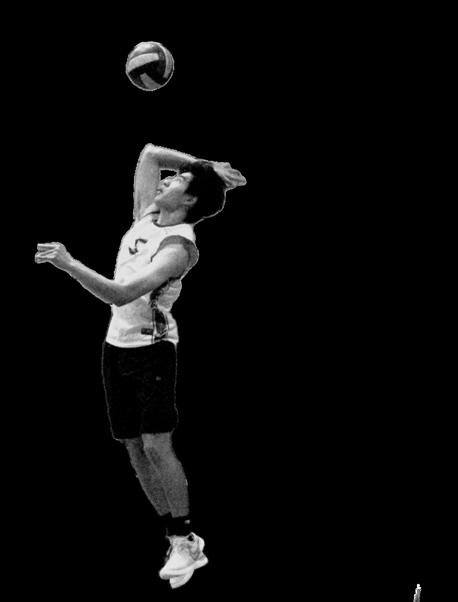
“My teammate Jack Rohloff, because he’s really experienced and he’s always willing to help you out. He’s a guy that everyone on the team can look to for support.”
–Linus Chuang (11)

–Sana





dive boys golf
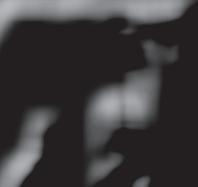



–Landen Leone (11)

“Someone who inspires me is Ken Griffey, Jr. because he’s a leftie.”
gymnastics

–Logan Thompson (12)
boys tennis

“My dad, because he played from a young age in India when it wasn’t even popular. He kept those traditions in the U.S. and got me into tennis.”
–Rohan Bedekar (10)
“Some of the older girls at my gym were really inspiring to me when I was younger, because I hoped I would be like them someday.”
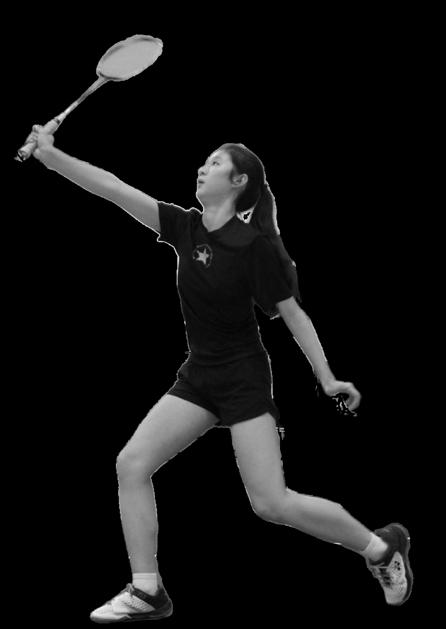
–Luna Cheng (10)
March 8, 202 Sports The Epitaph 1 PAGE DESIGN BY AVIV MATAS AND ZEINAB RAKHSHANDEHROO 5
4
“My competition. If my competition is doing better than me, then I’m going to do better.”
“My dad, because he got me going into golf. He’s always been a good role model and always inspired me to do new things.”
–Aiden Chuah (9)
“I think my love for the game is what’s keeping me inspired to play all these years.”
Ranganathan (12)
“My parents signed me up for a team when I first started playing and the coach really motivated me to work hard and continue.”
–Jenny Lyu (11)
“The older members on my team, like Caleb Leung and Evan Gardner. I really look up to them and they’re a big reason why I continued on with the sport.”
PhotobyCatherineYang
“I like “Falsettos” because it shows a beautiful story about complicated family and the queer community in the ‘80s.”
—Syd Mendelson (11)

Shining a light on the impacts of theater
“My favorite musical is “Avenue Q” because it makes fun of adult life and talks about things I haven’t seen many other musicals talk

about.”

—Sonali
Wake (10)

“My favorite musical is “Hadestown” [because] the music is great and it’s cleverly written. There is interesting chemistry between a lot of the characters.”

A SPOONFUL OF STEREOTYPES

STUDENTS, STAFF REFLECT ON THEATER STIGMAS
By Danielle Feldsher, Annie Guo and Naaga Senthil
The drama community at HHS serves as a platform for students to showcase their talents in front of audiences as part of the drama class or as a member of the drama club. With the community, however, comes several stereotypes of students in drama, drama teacher Alana Caires said.
Senior Nina Huang said stereotypes often categorize drama students as extroverted people who deviate from social norms. Meanwhile, drama club officer, sophomore Sonali Wake said a stereotype often associated with theater students is their loud, attention-seeking personality.
“There are a few theater kids who do like attention, but the majority of students are not attention seeking,” Wake said. “There are definitely stereotypes of theater kids, but there’s a difference between stereotypes and reality.”
Additionally, Caires said theater can often be seen as a place that is associated with peo -
—Nadav Ekshtein (12)
ple who do not fit in other settings. However, Caires said she believes that this is a strength among drama students. Despite the stereotypes surrounding students in drama, Caires said the community is a place where everyone is welcome. The sense of community within the drama class helps students establish relationships.
“When you have a foundation of people who are passionate about the same thing and want others to feel like they belong, it creates an excellent foundation for a positive and welcoming environment,” Caires said. “We’re here to do the same things, we have similar values and want to make other people feel good.”
Moreover, Caires said the students themselves are at the forefront of bringing others in and making them feel safe and accepted.
“We get to have a lot of fun and connect with each other in ways that you wouldn’t necessarily get to do in a normal

class,” Caires said. “For the most part, [the class] is a really solid group. I’m just there to oversee and provide opportunities for them to further those relationships.”
In drama club, pre-show rituals are an example of the community’s tightknit connection, Wake said. For example, the cast performs a ritual called an energy circle as a way to get mo tivated before the show.
“In those moments, everyone shares their experiences, how they made friends, their fa vorite part of the journey or some thing new for them,” Wake said. “They get to share the impact that the show has had on them and it just makes for a really great expe rience.”
Even for those who are coming in without any experience, Huang, a drama student, said there are many opportunities for learning, growth and support from everyone in the community along the way.
“There’s not going to be judgment if you’ve never acted before,” Huang said. “People are


March 8, 2024 16 Spotlight The Epitaph PAGE DESIGN BY DANIELLE FELDSHER, ANNIE GUO AND NAAGA SENTHIL
Photo by Annie Guo
Photo by Naaga Senthil
Senior Nina Huang stands as she plays Starlight in a “One Acts” performance.
Photo by Alicia Liste
Syd Mendelson as Whizzer from the musical, “Falsettos.”
Sonali Wake as Nicky from the musical, “Avenue Q.”
Photo by Danielle Feldsher
Nadav Ekshtein as Orpheus from the musical, “Hadestown.”



























































































